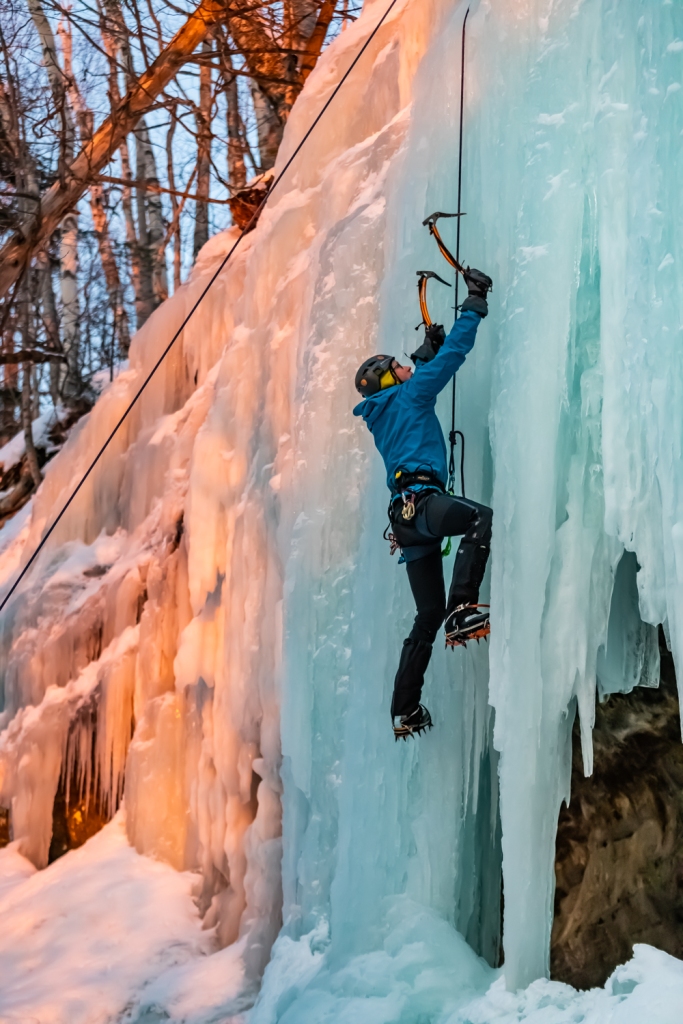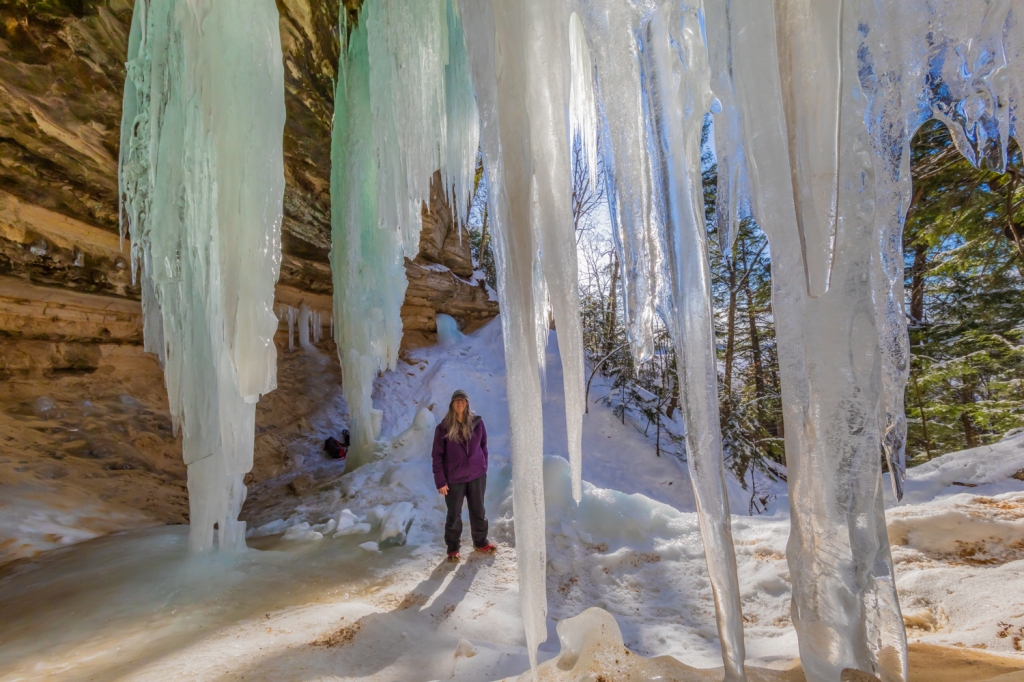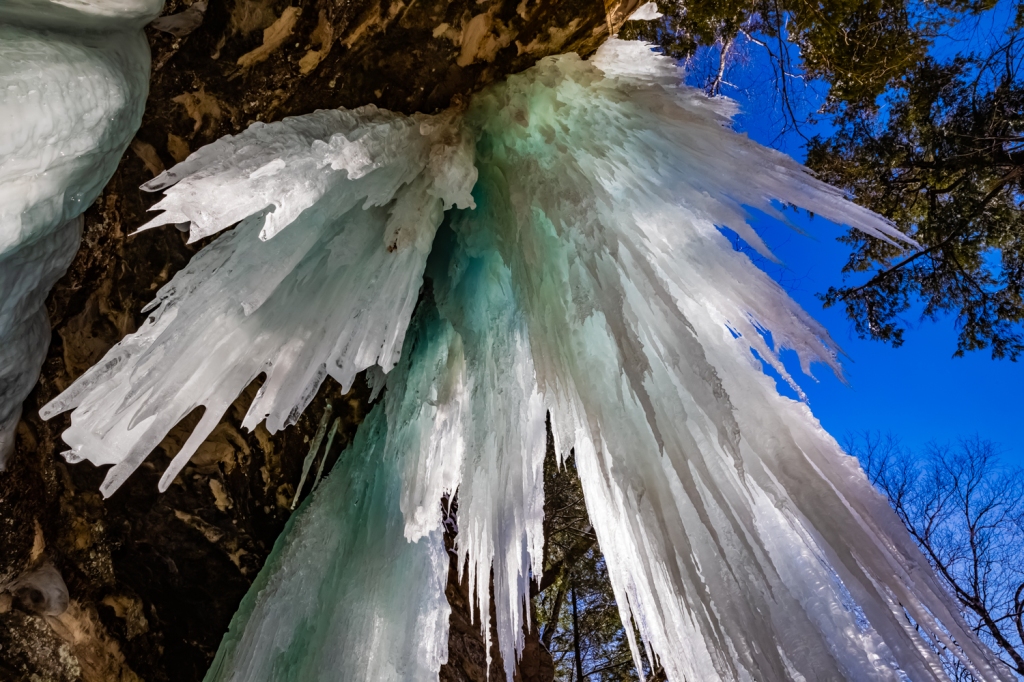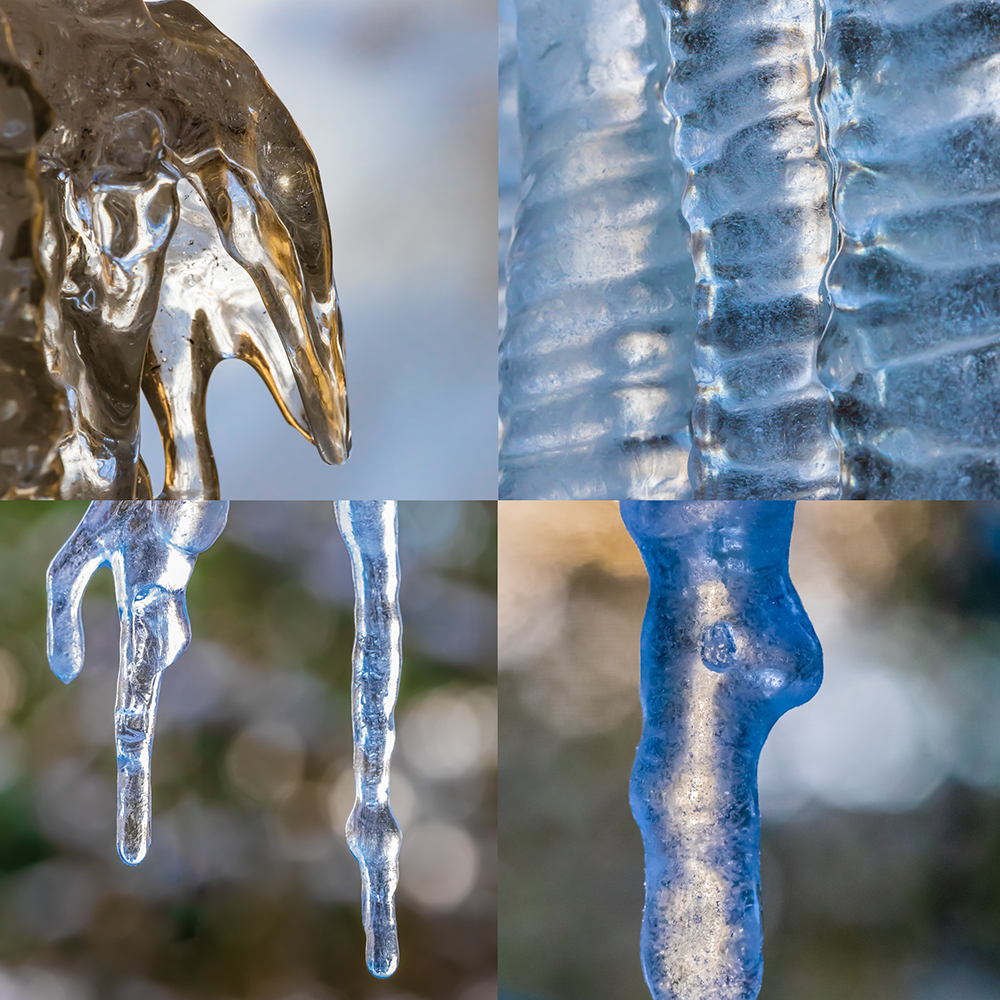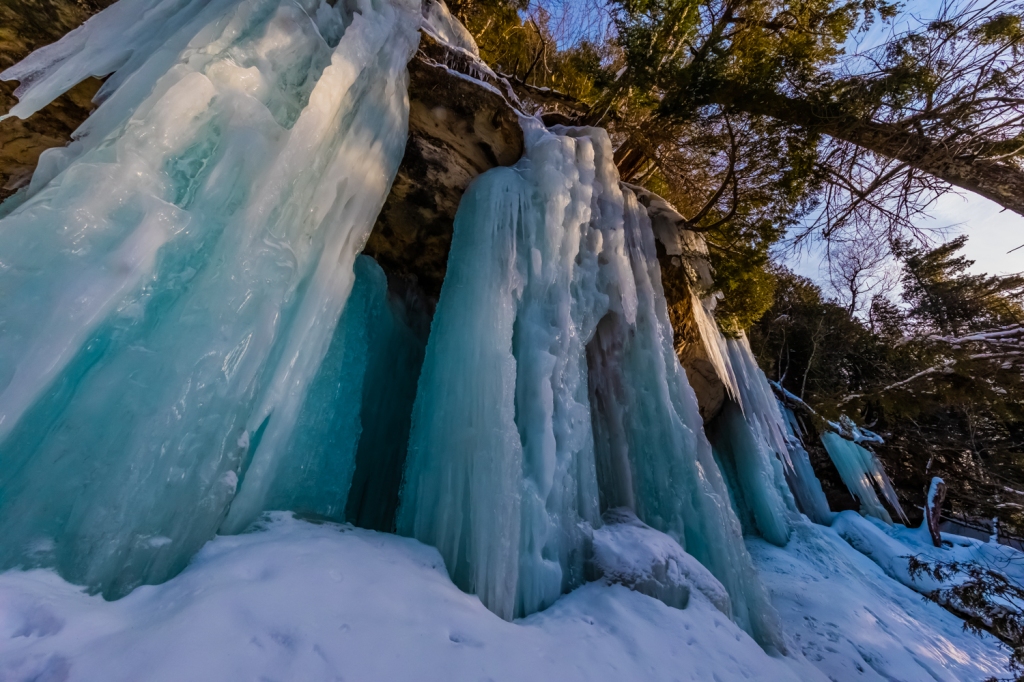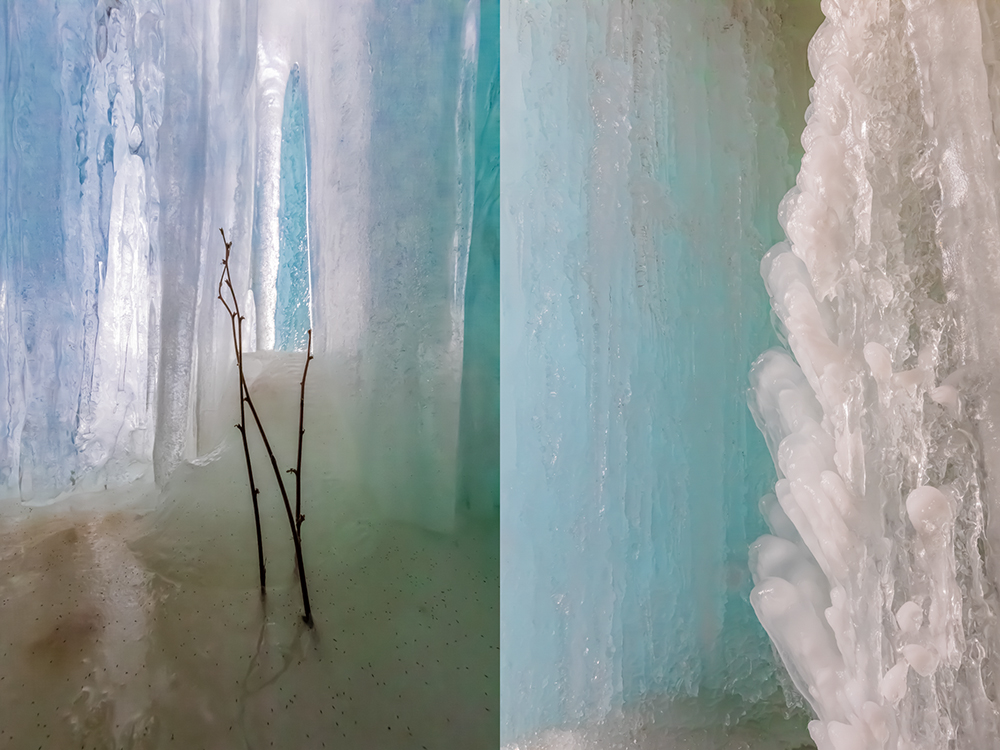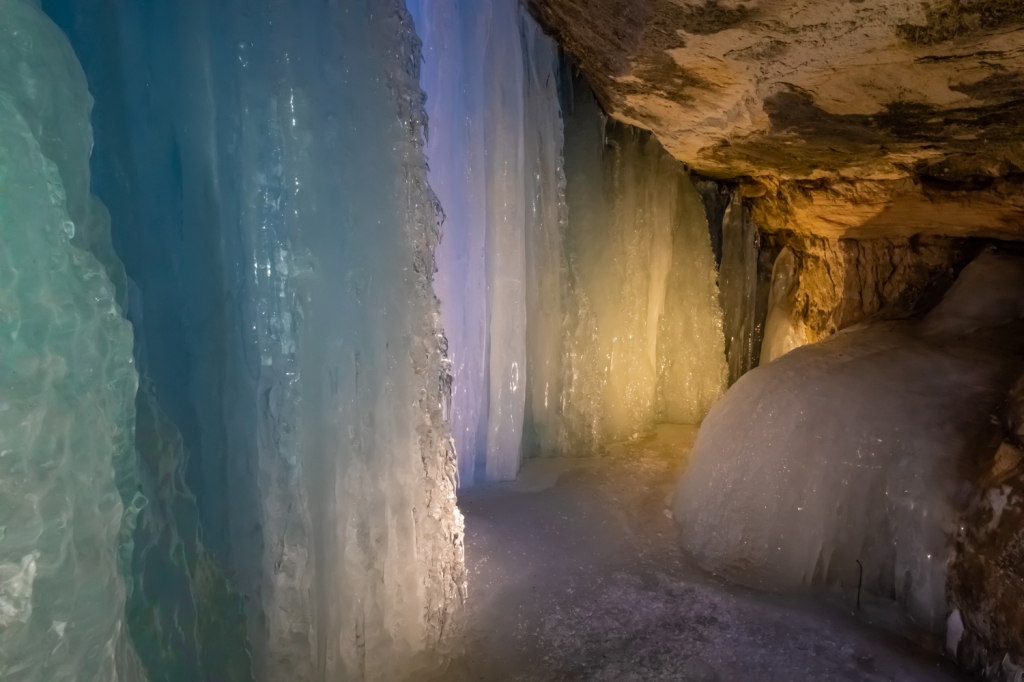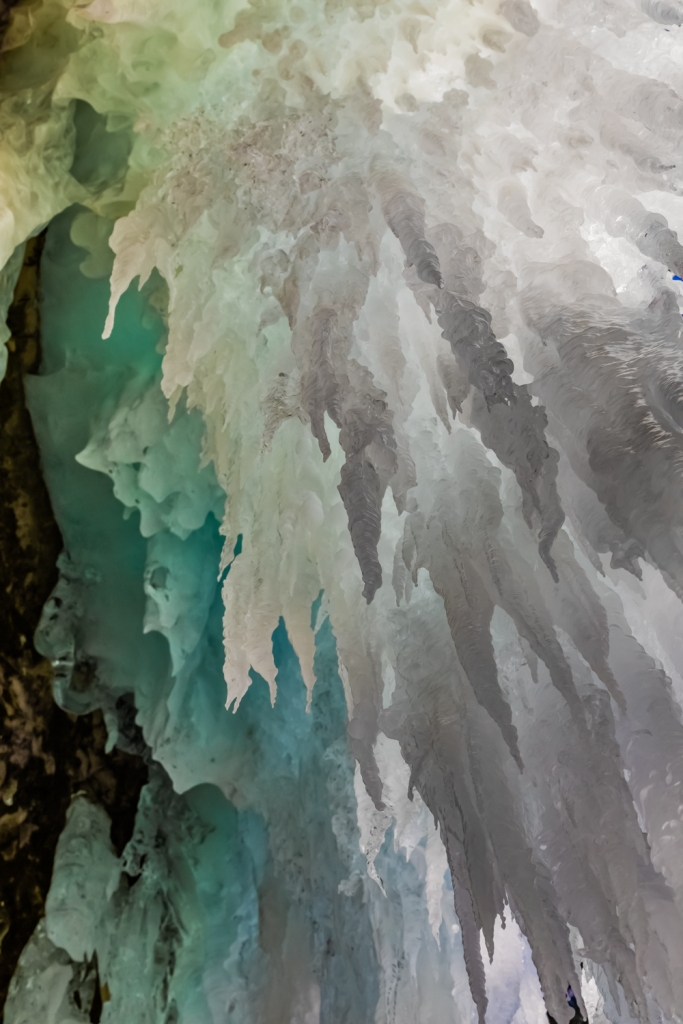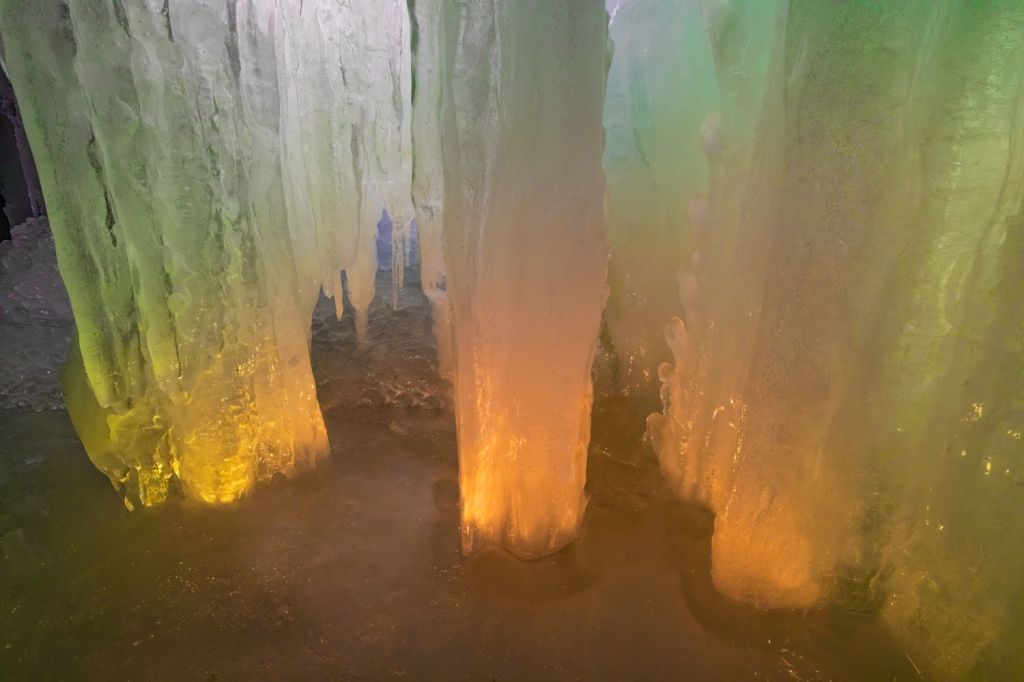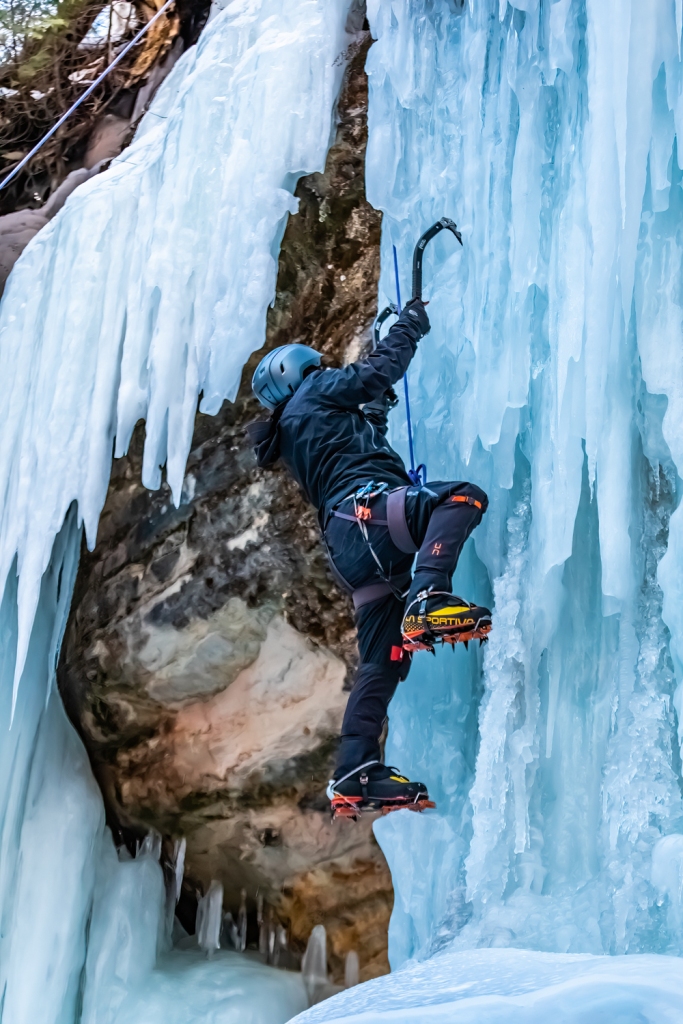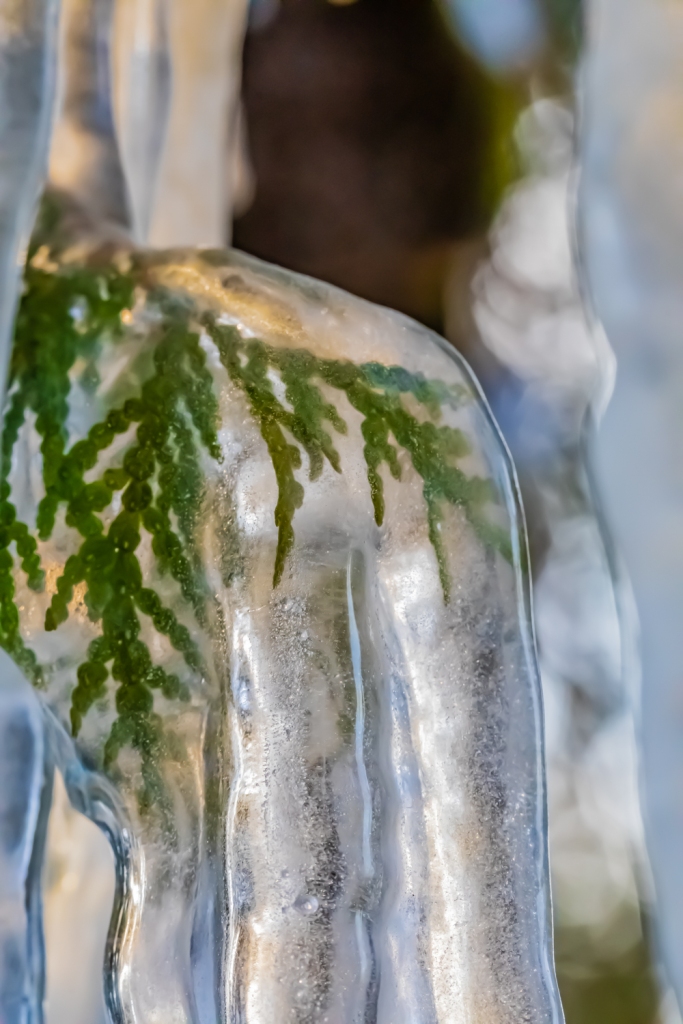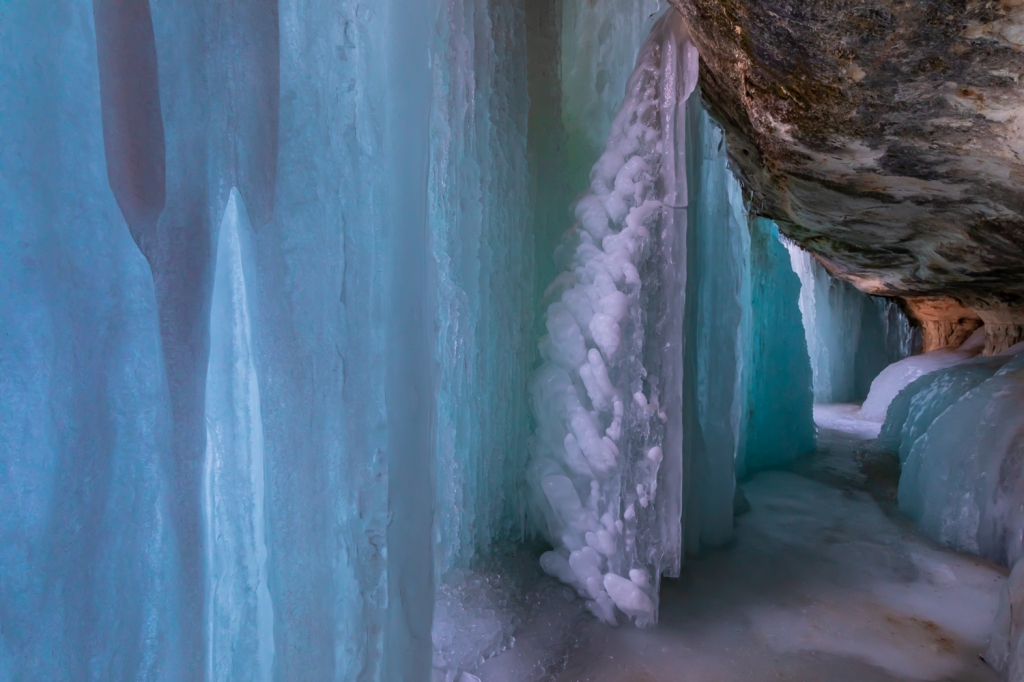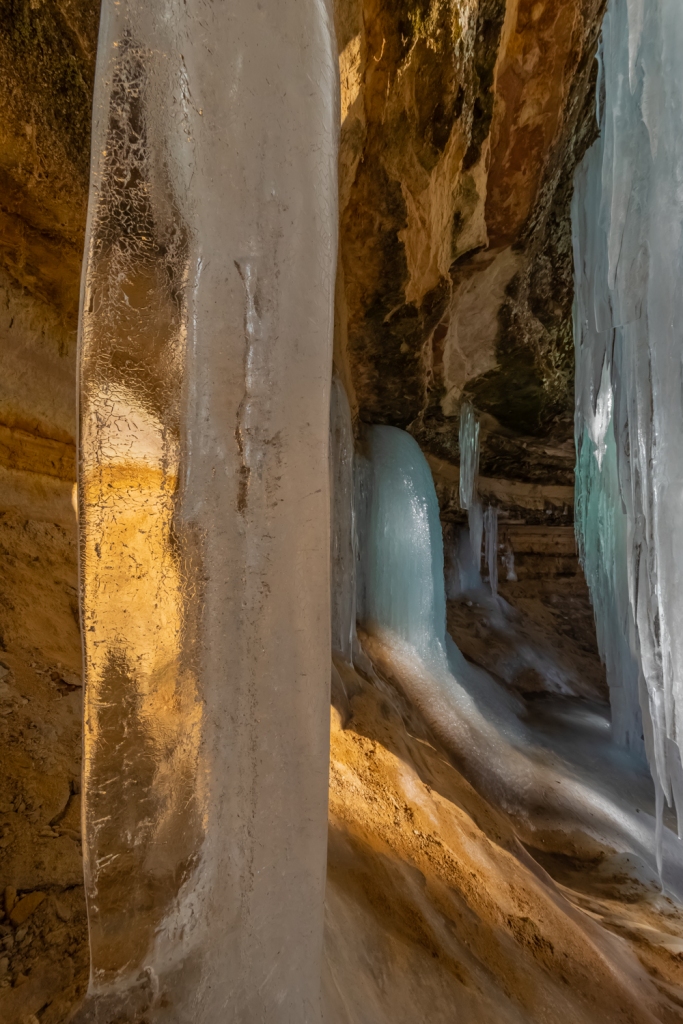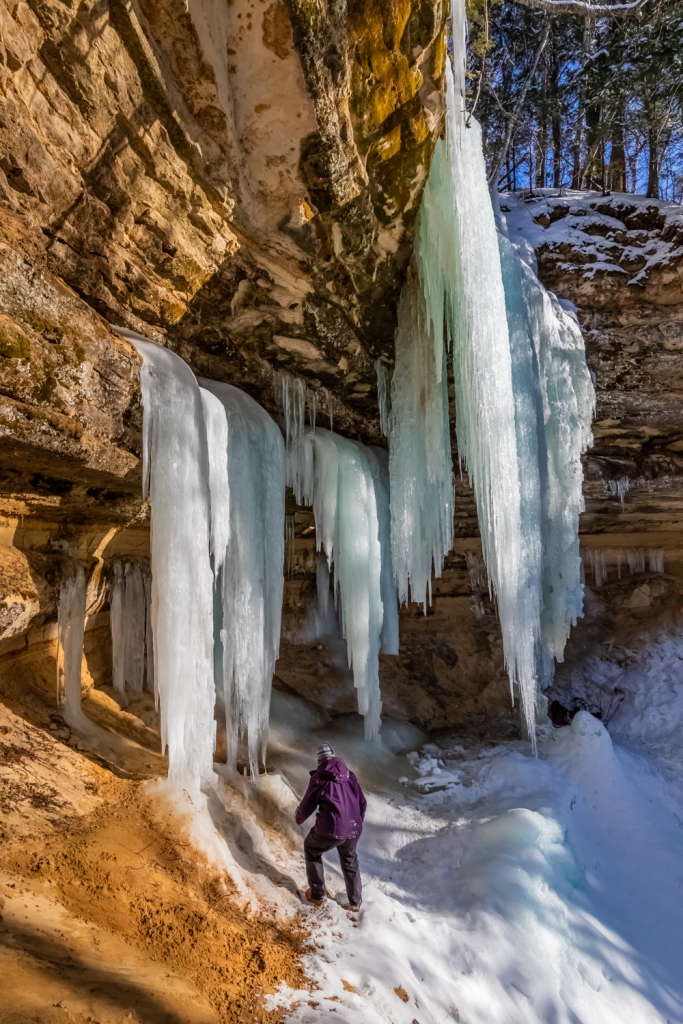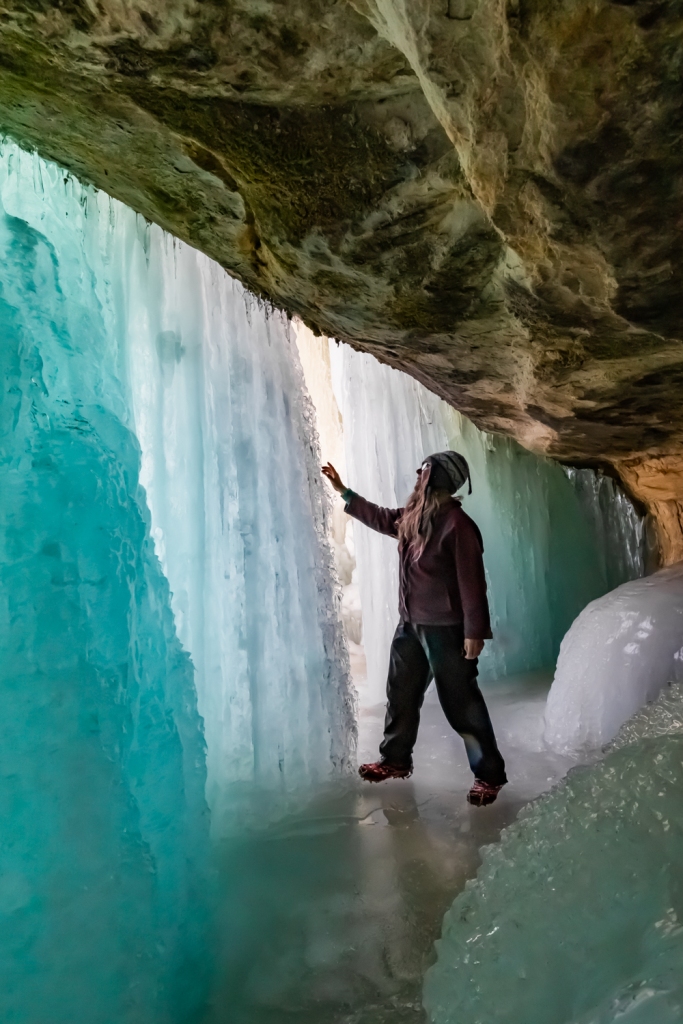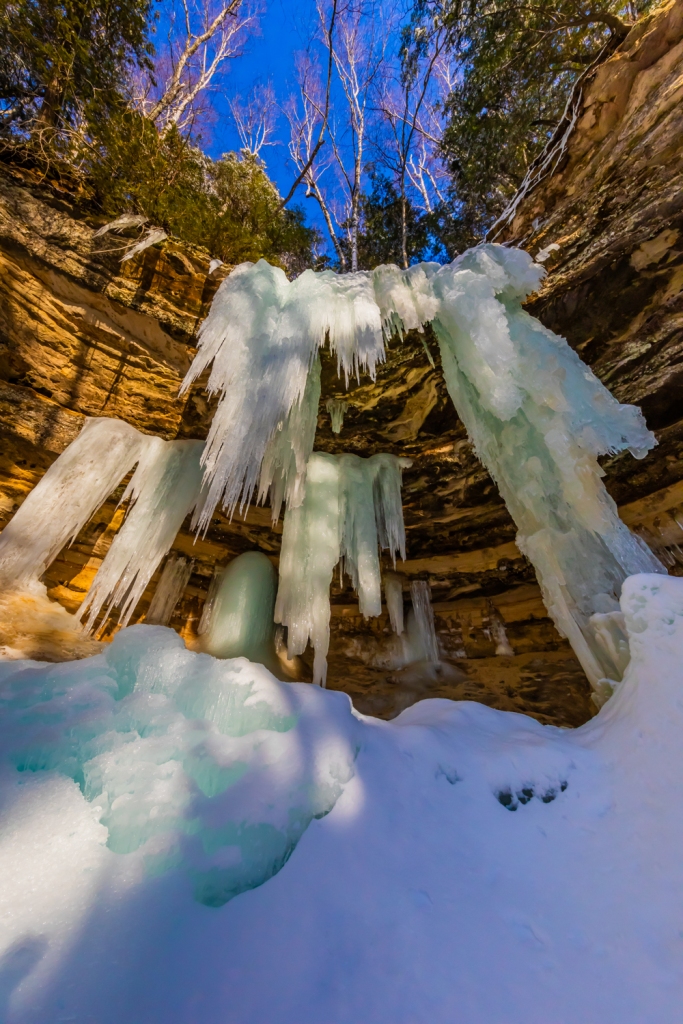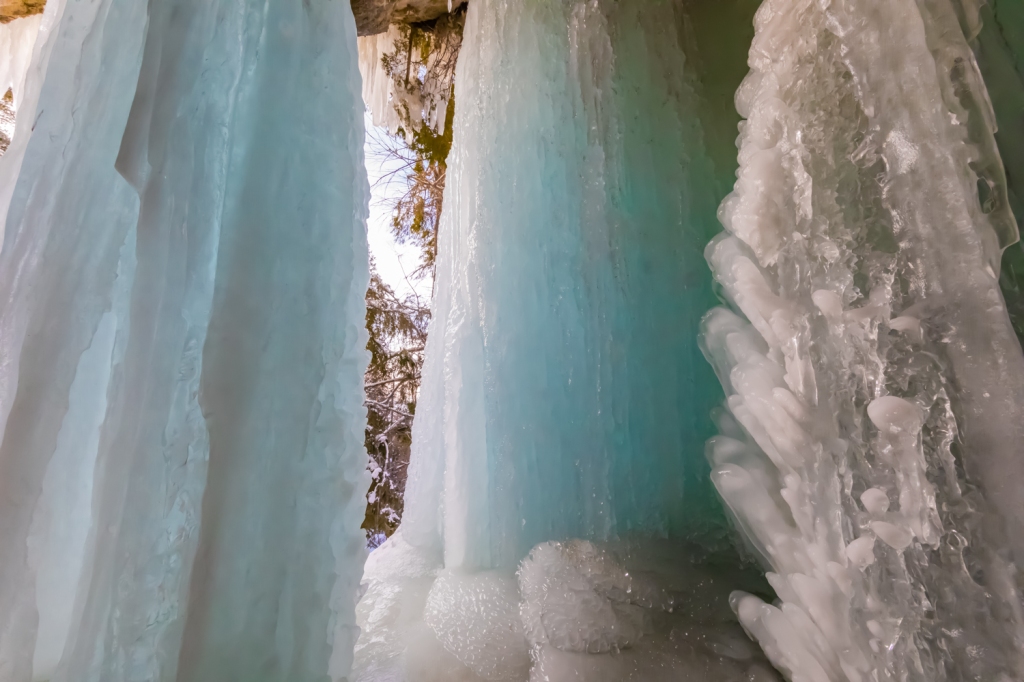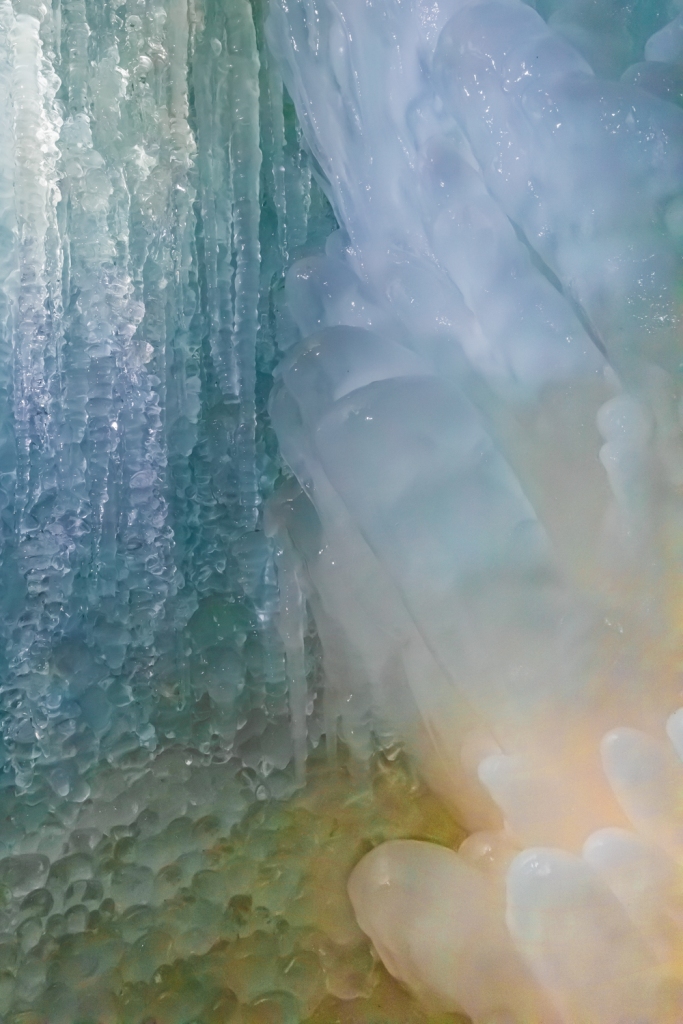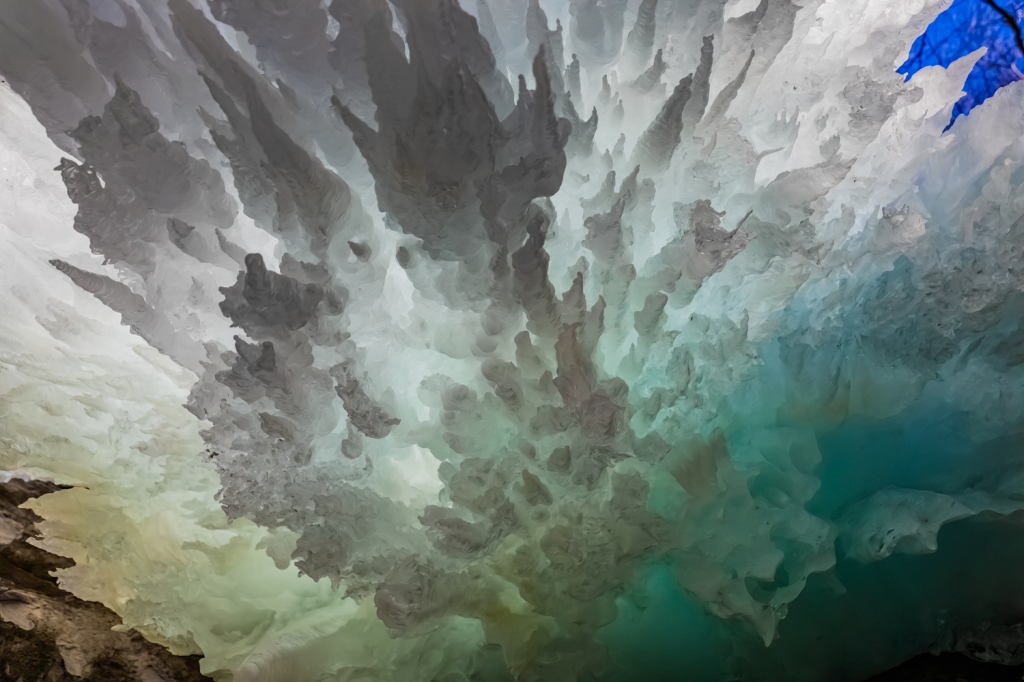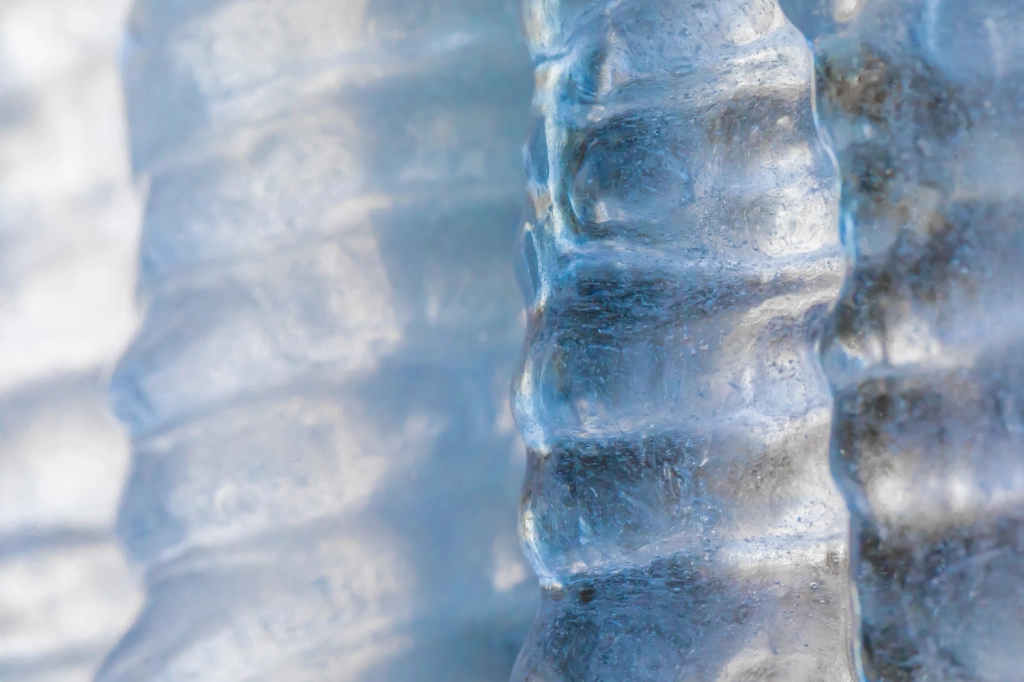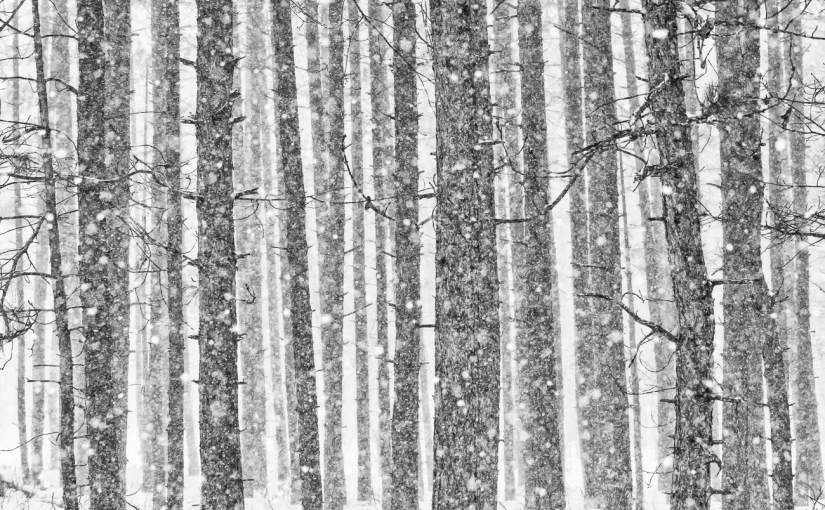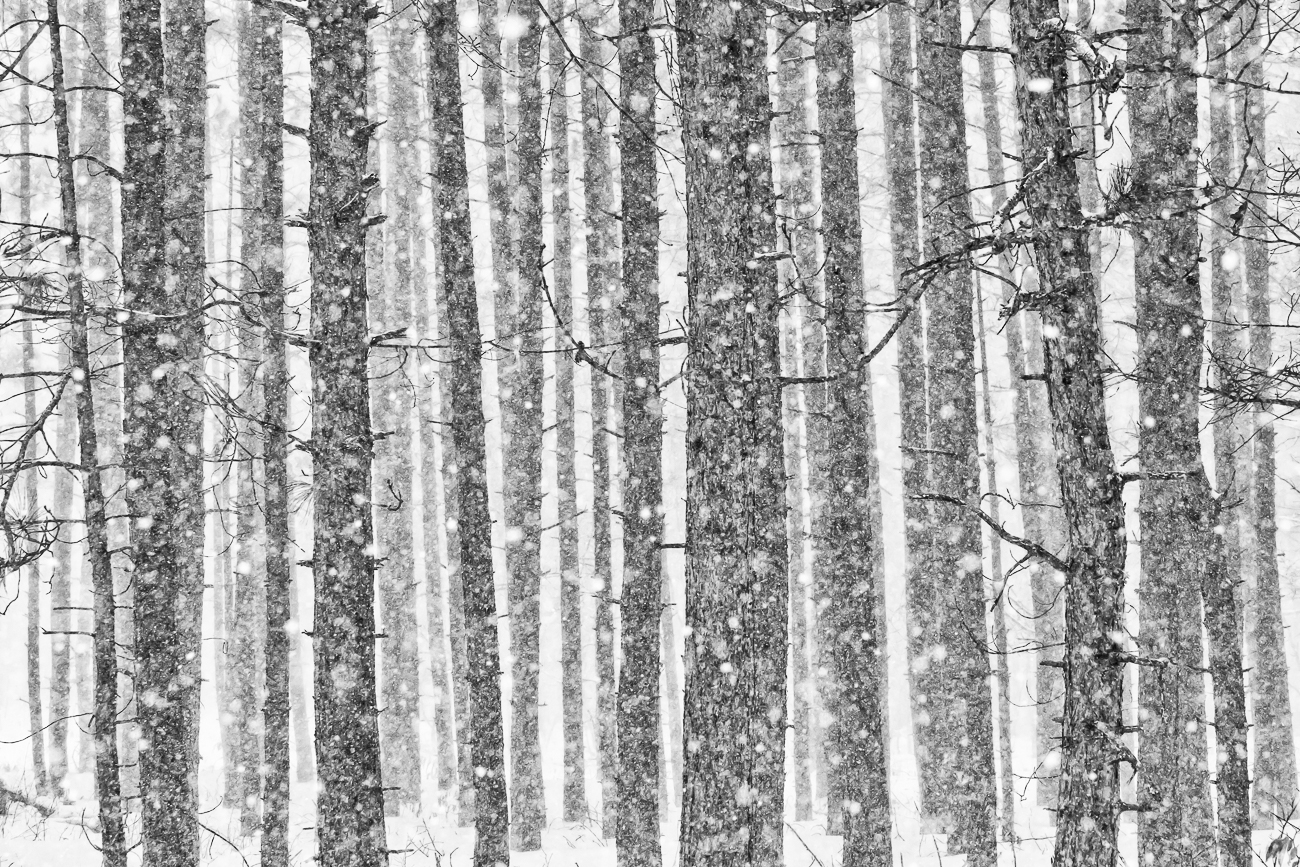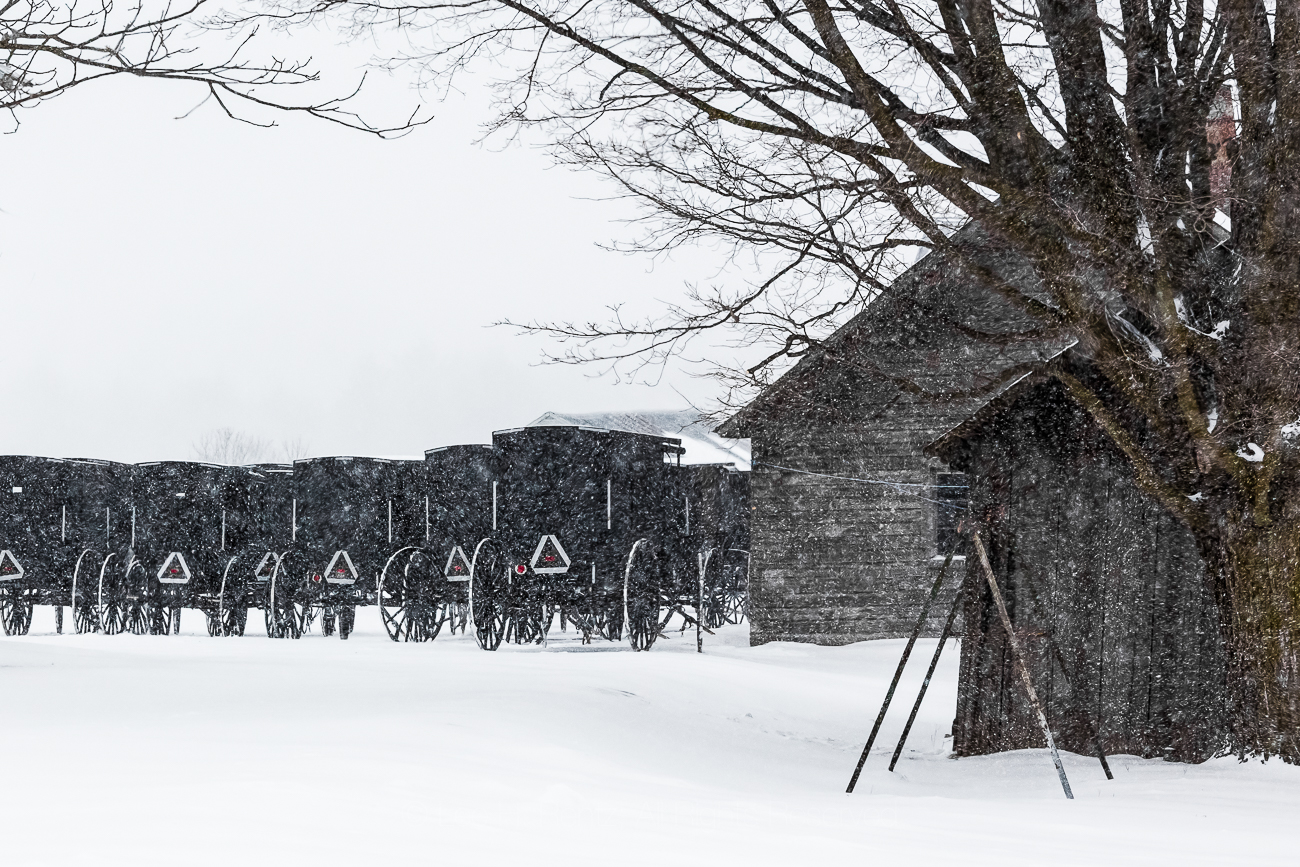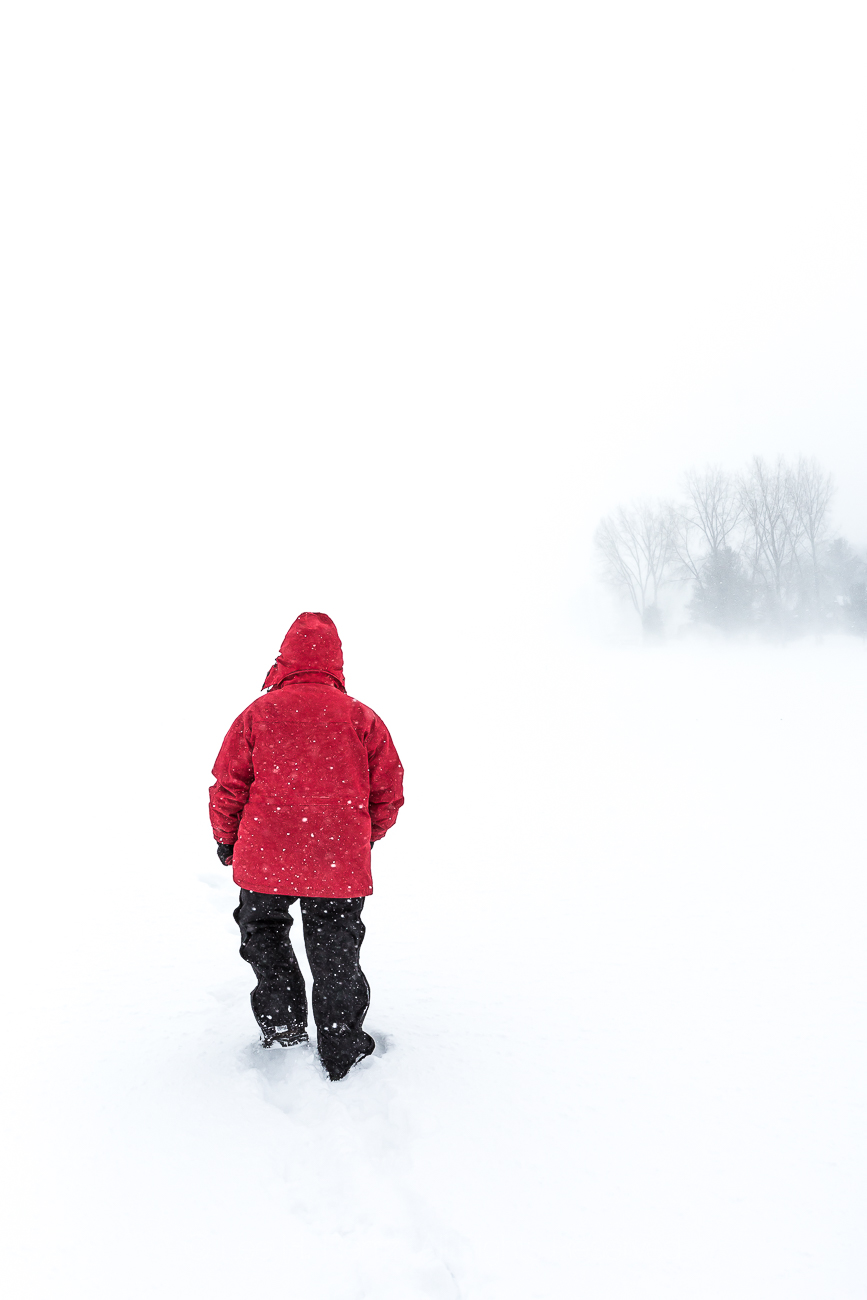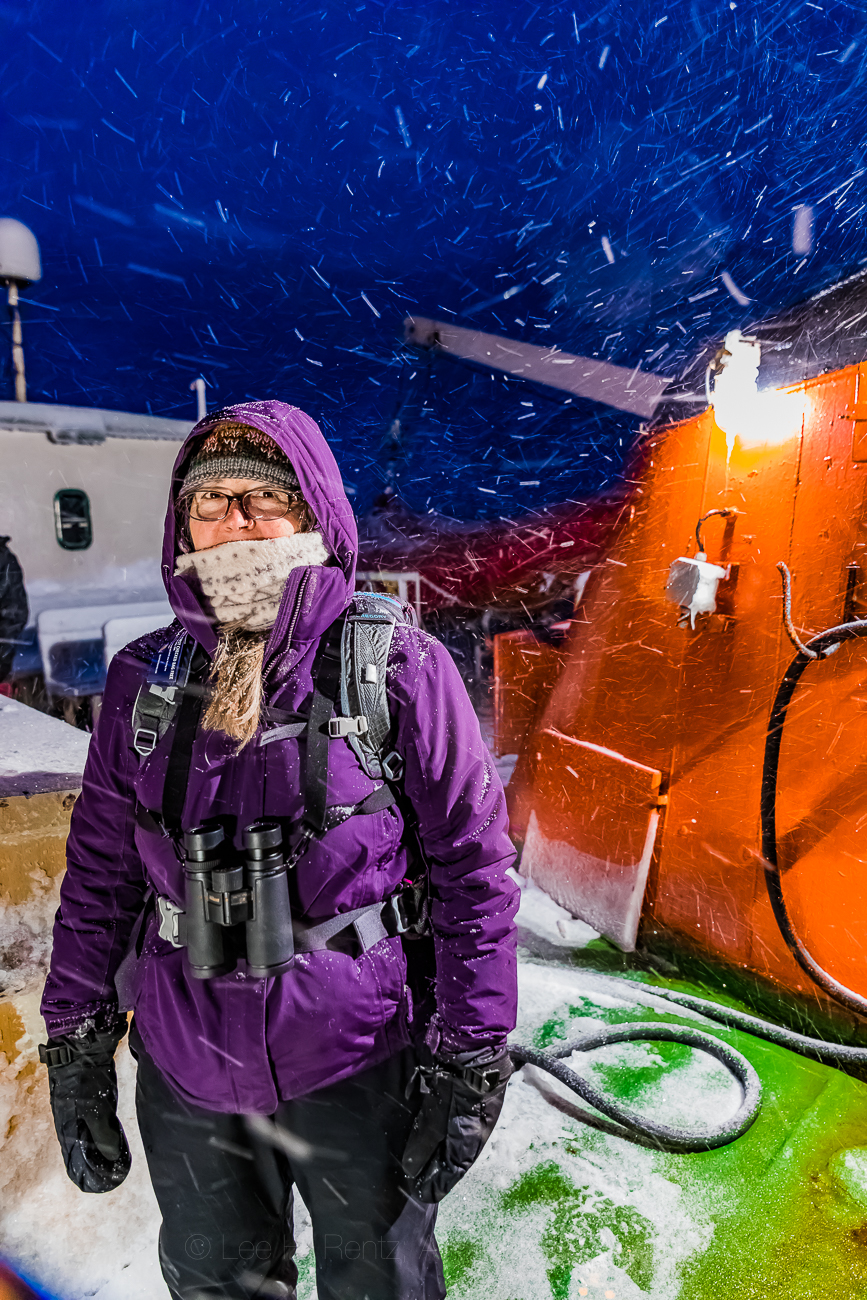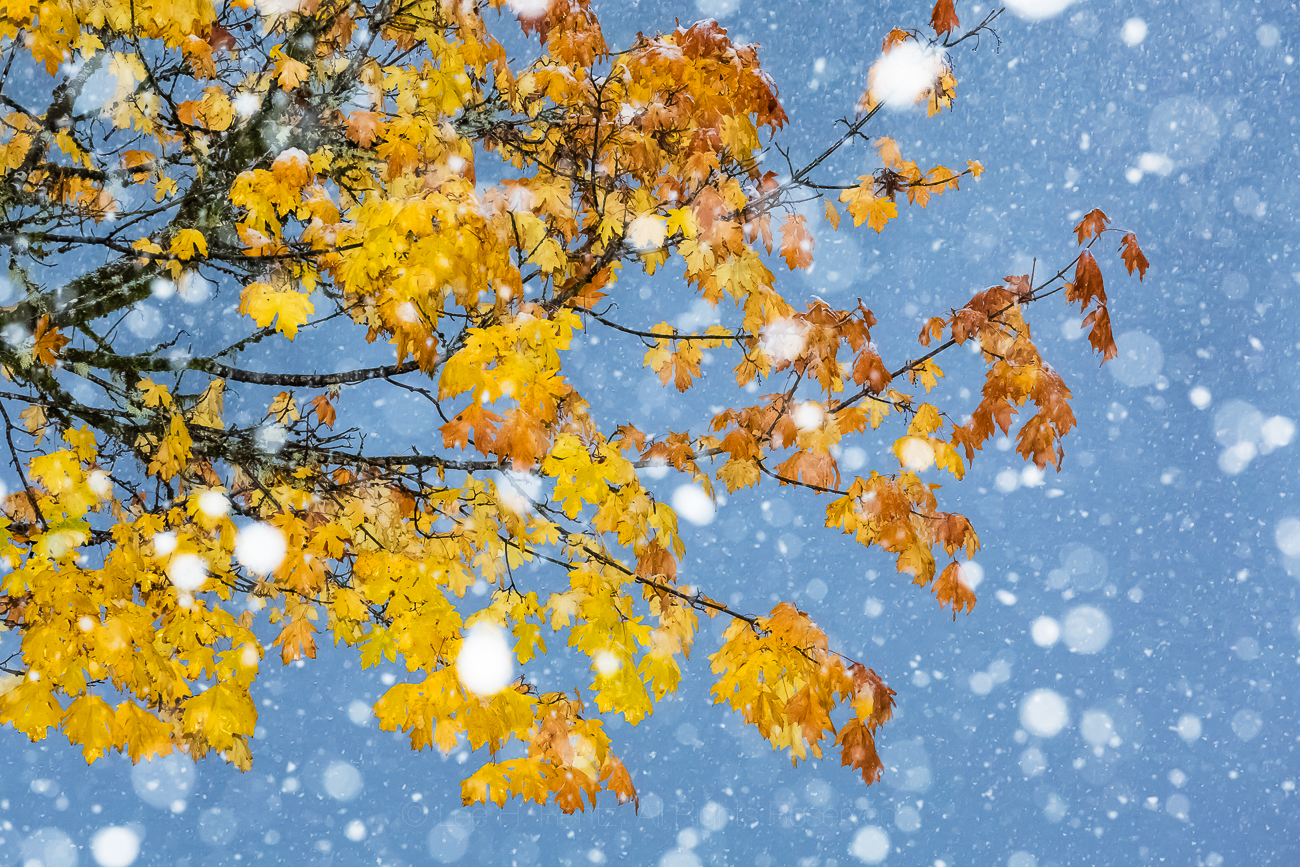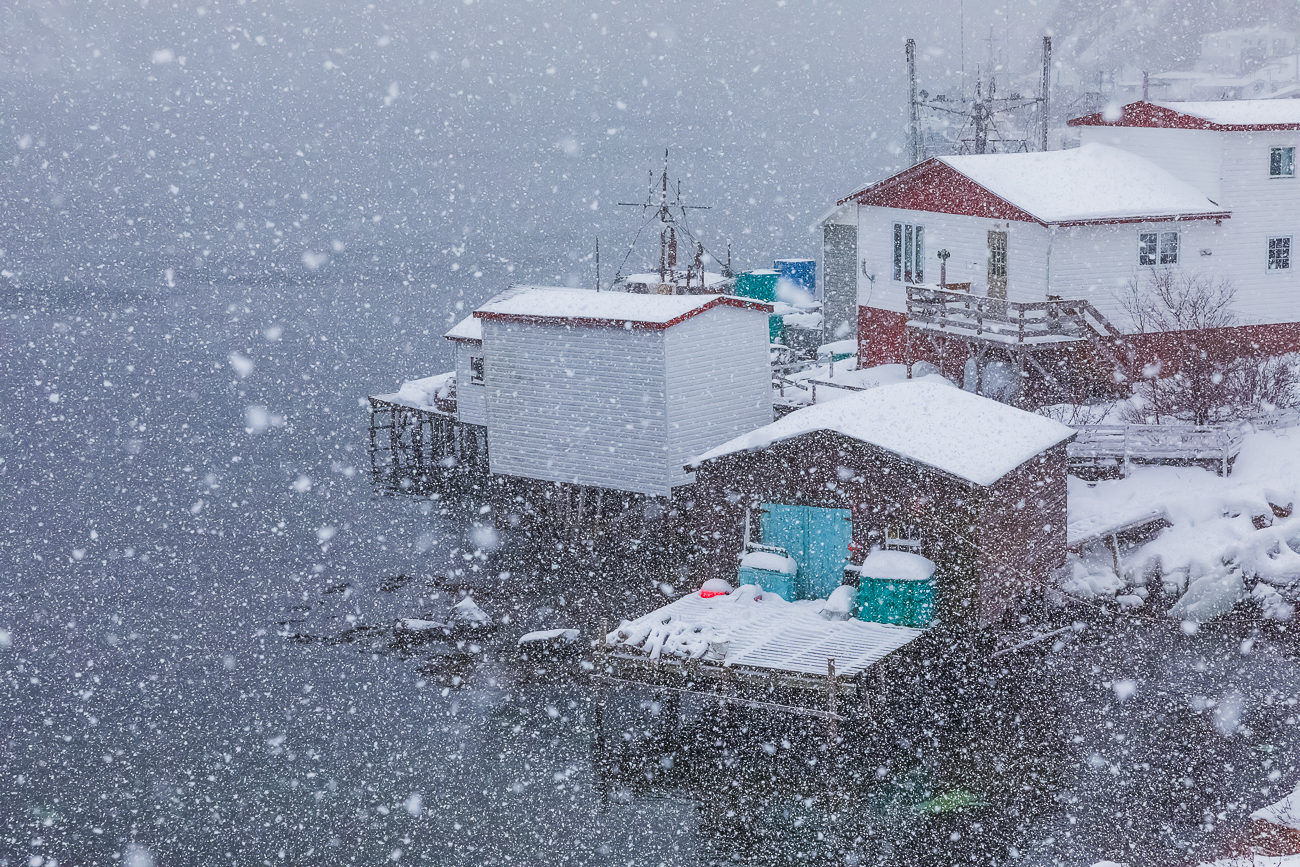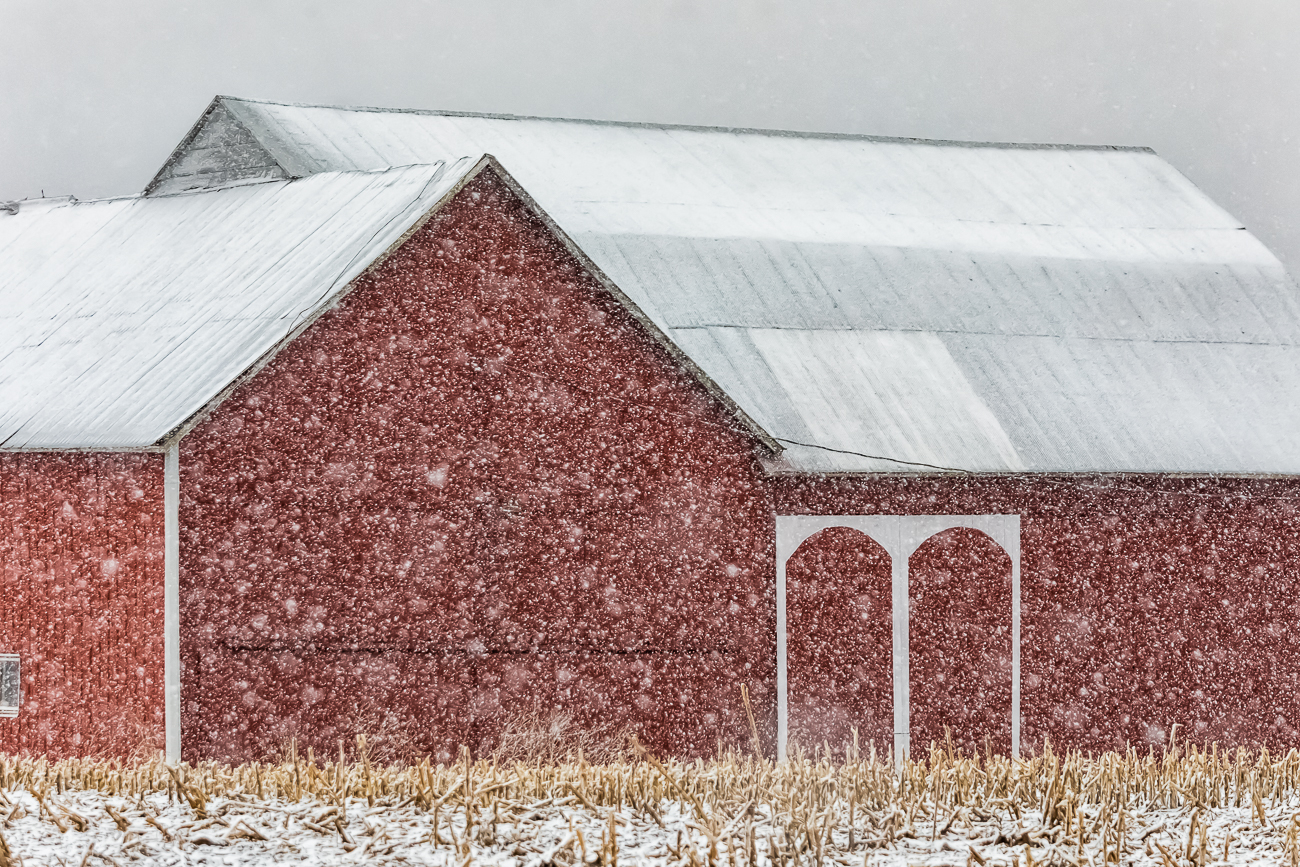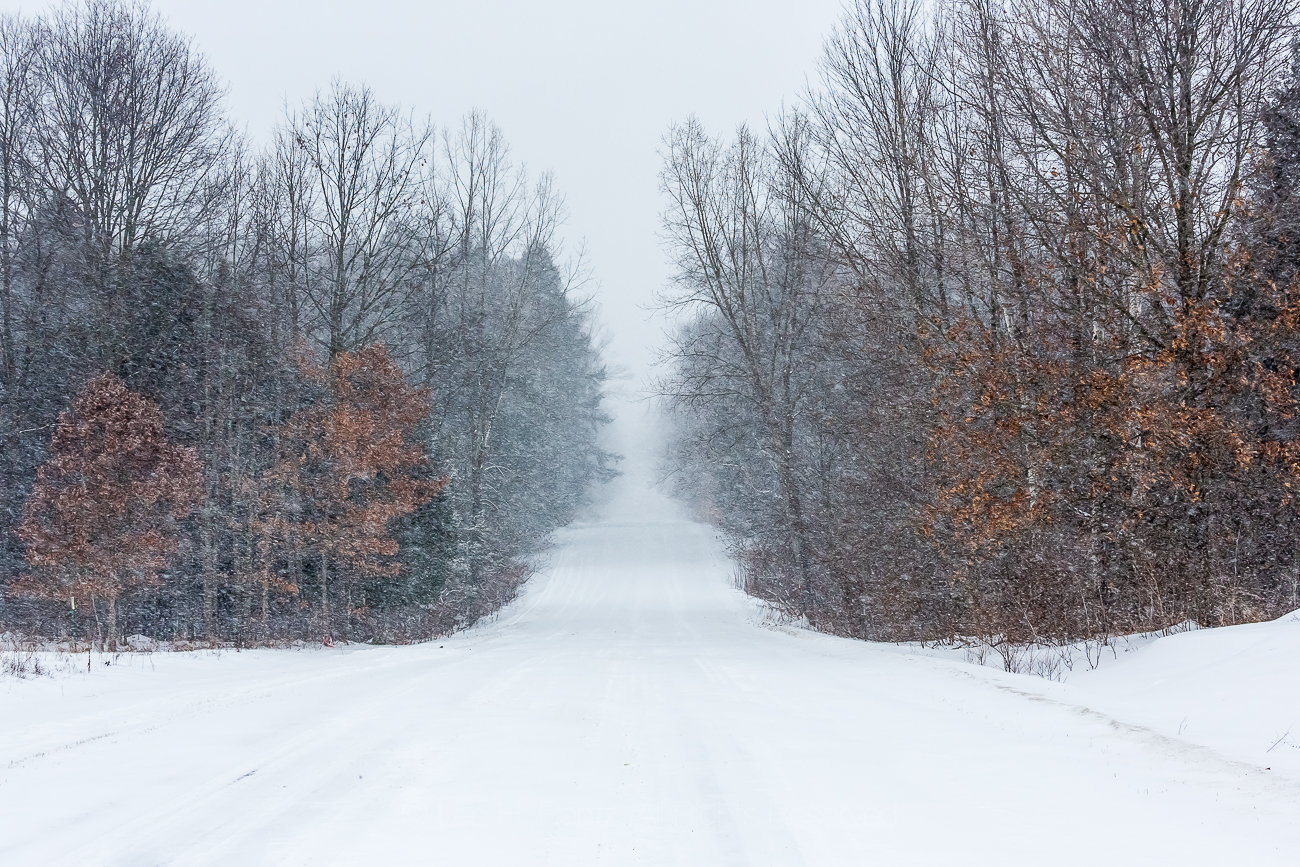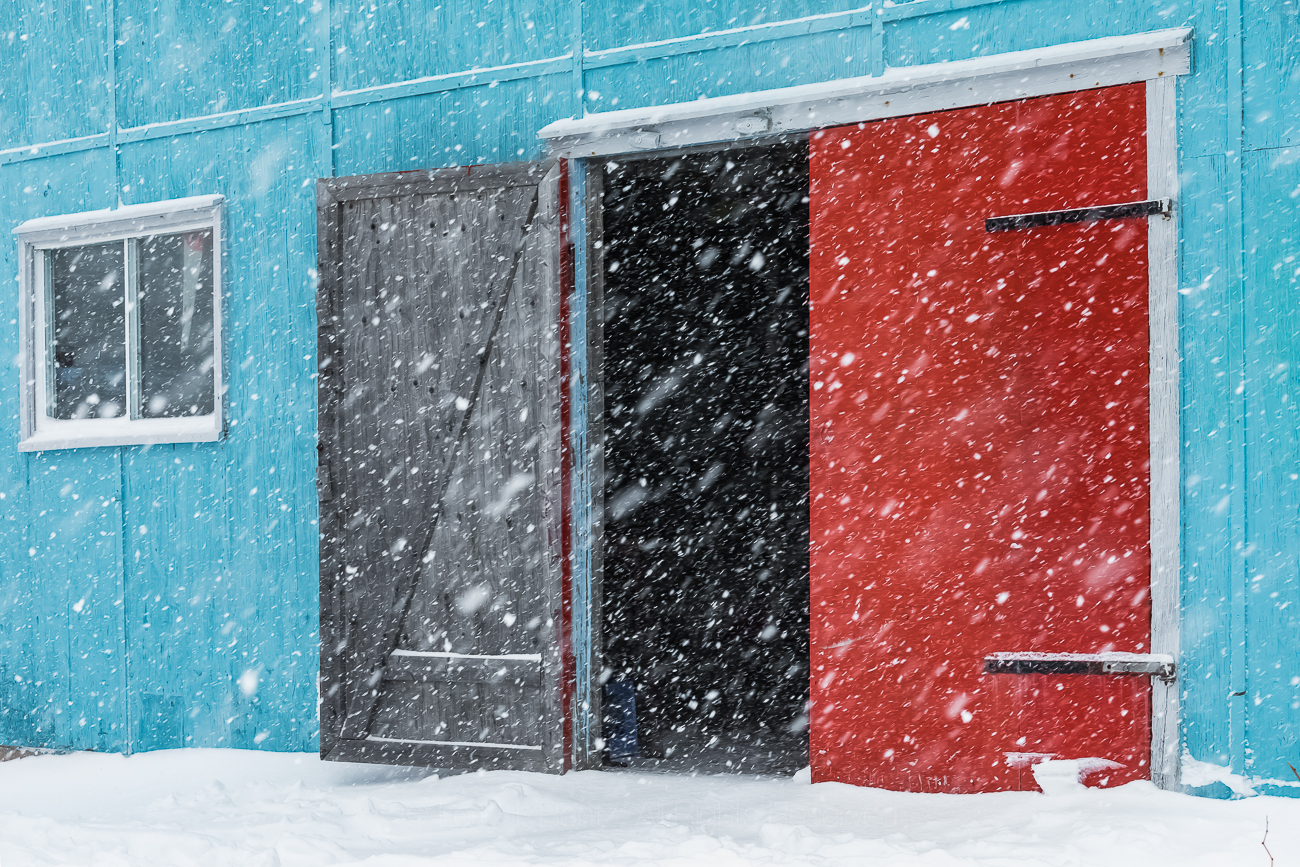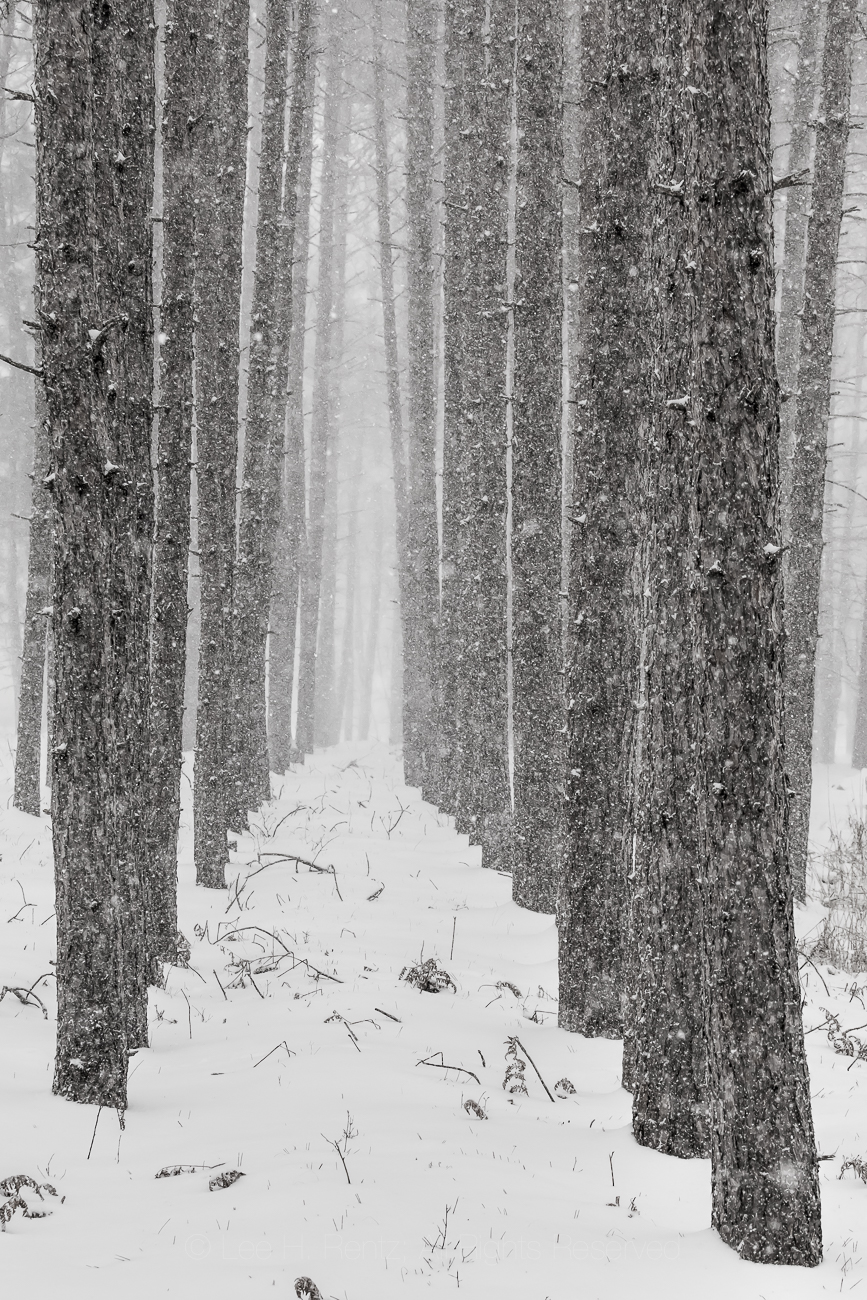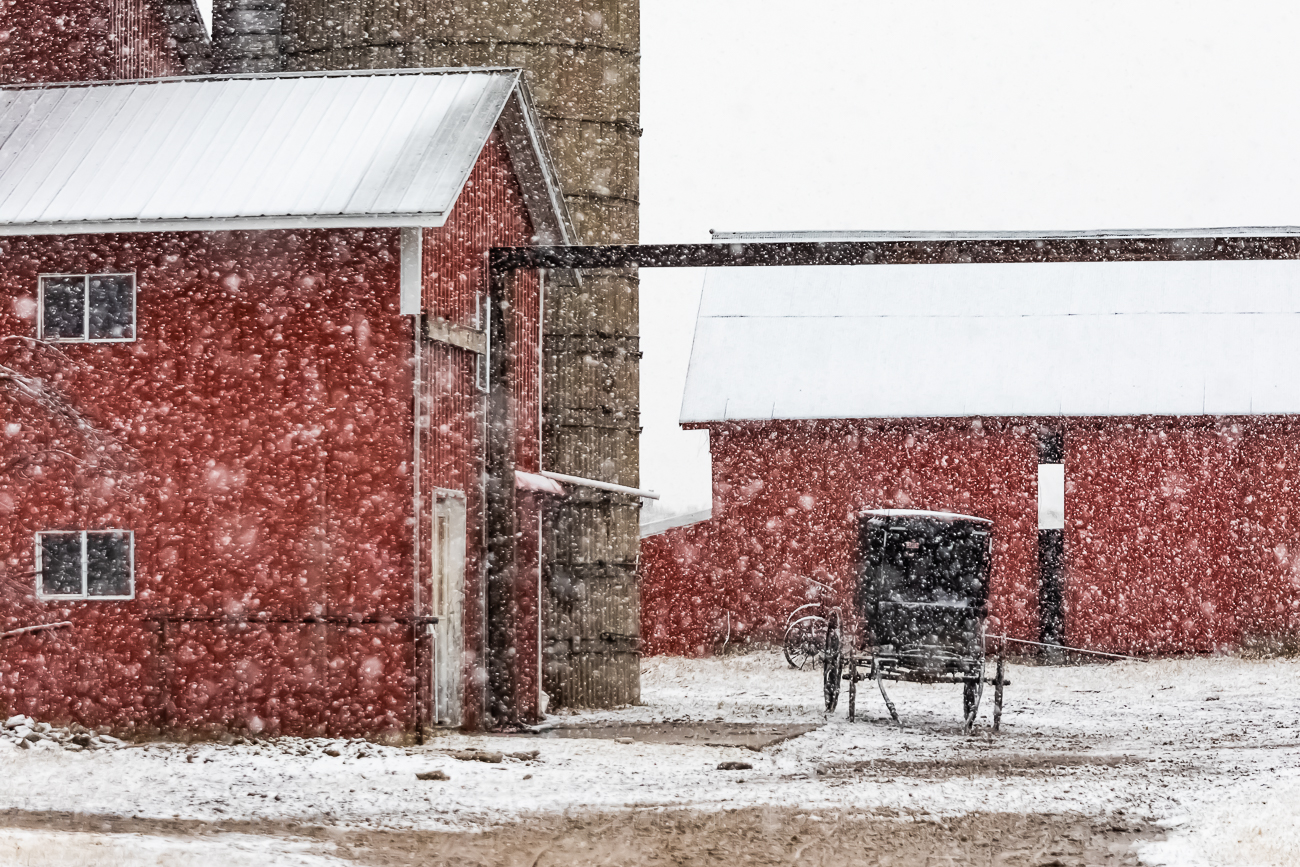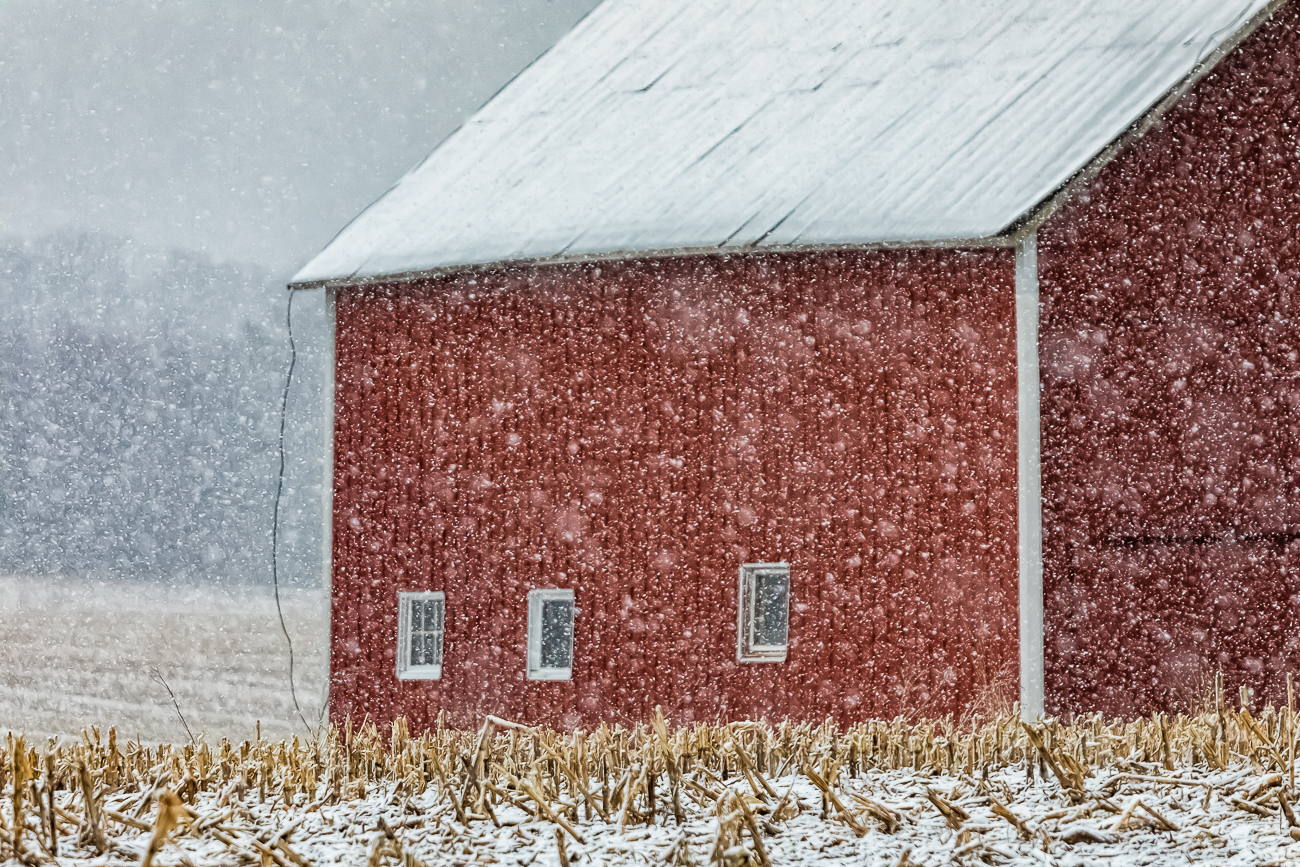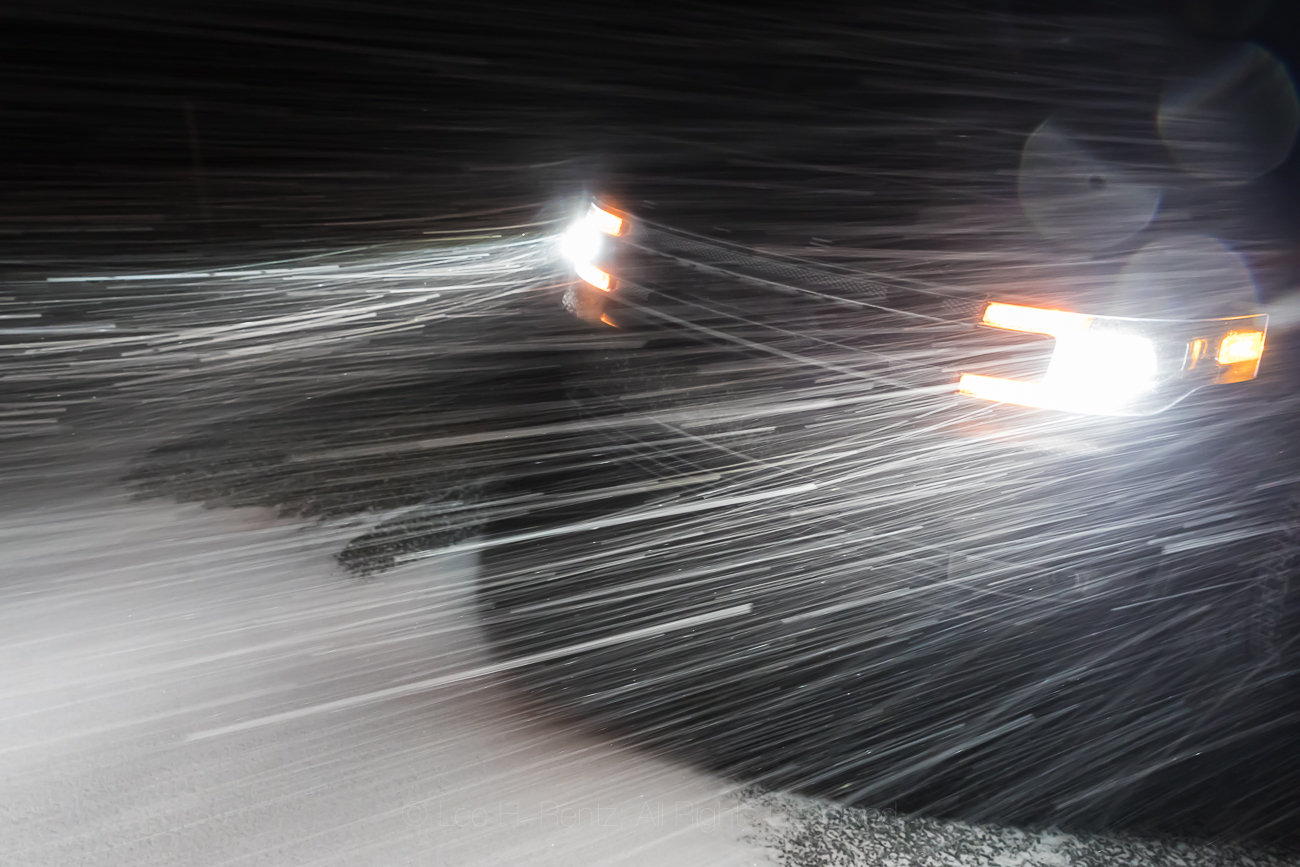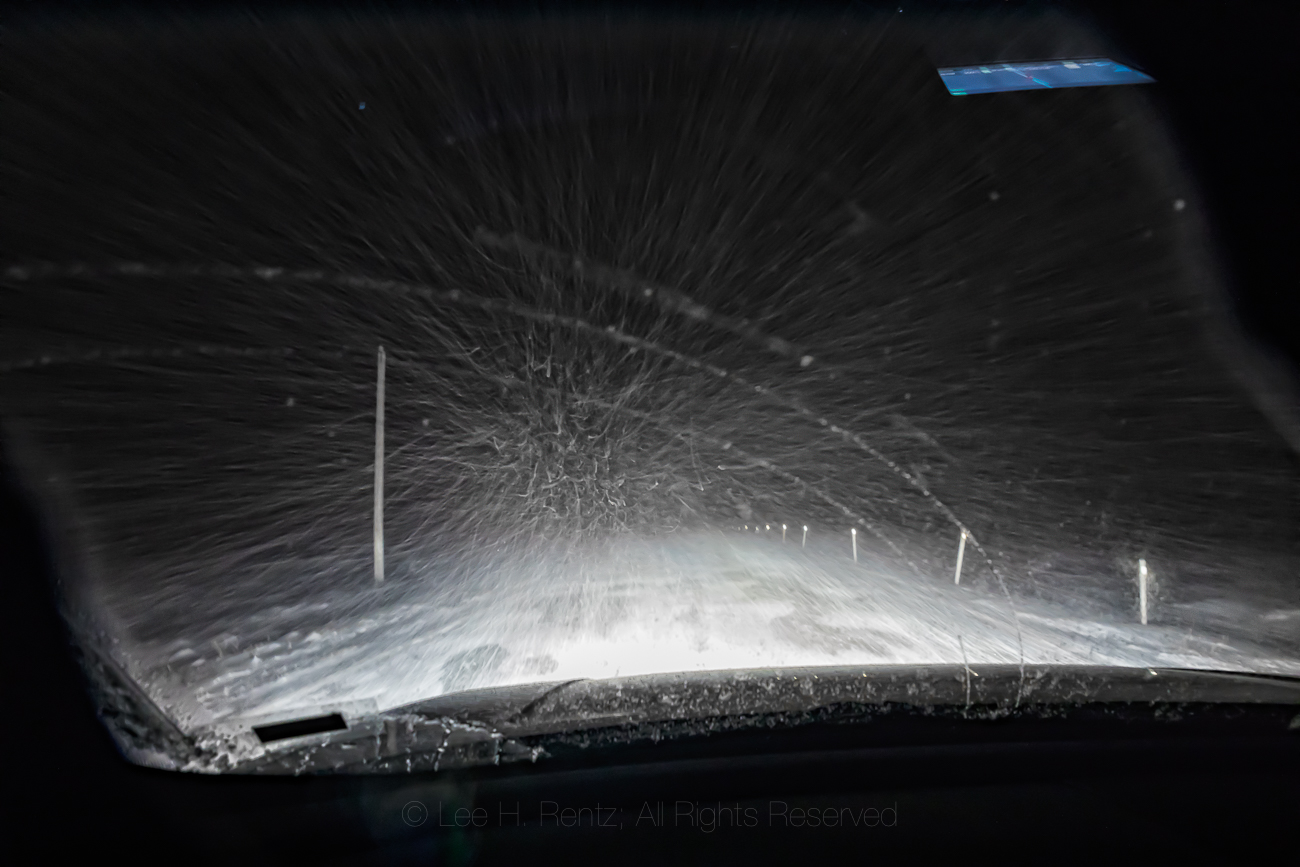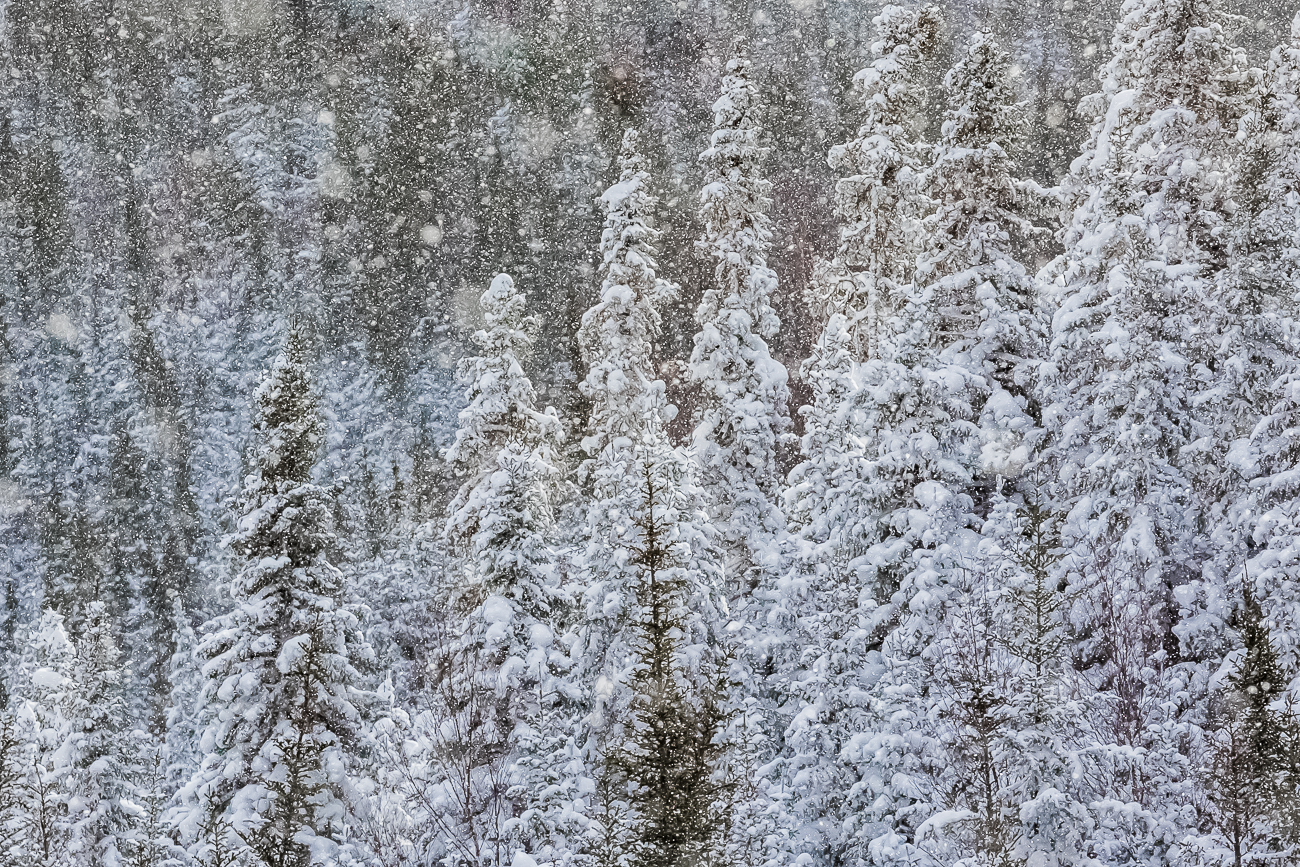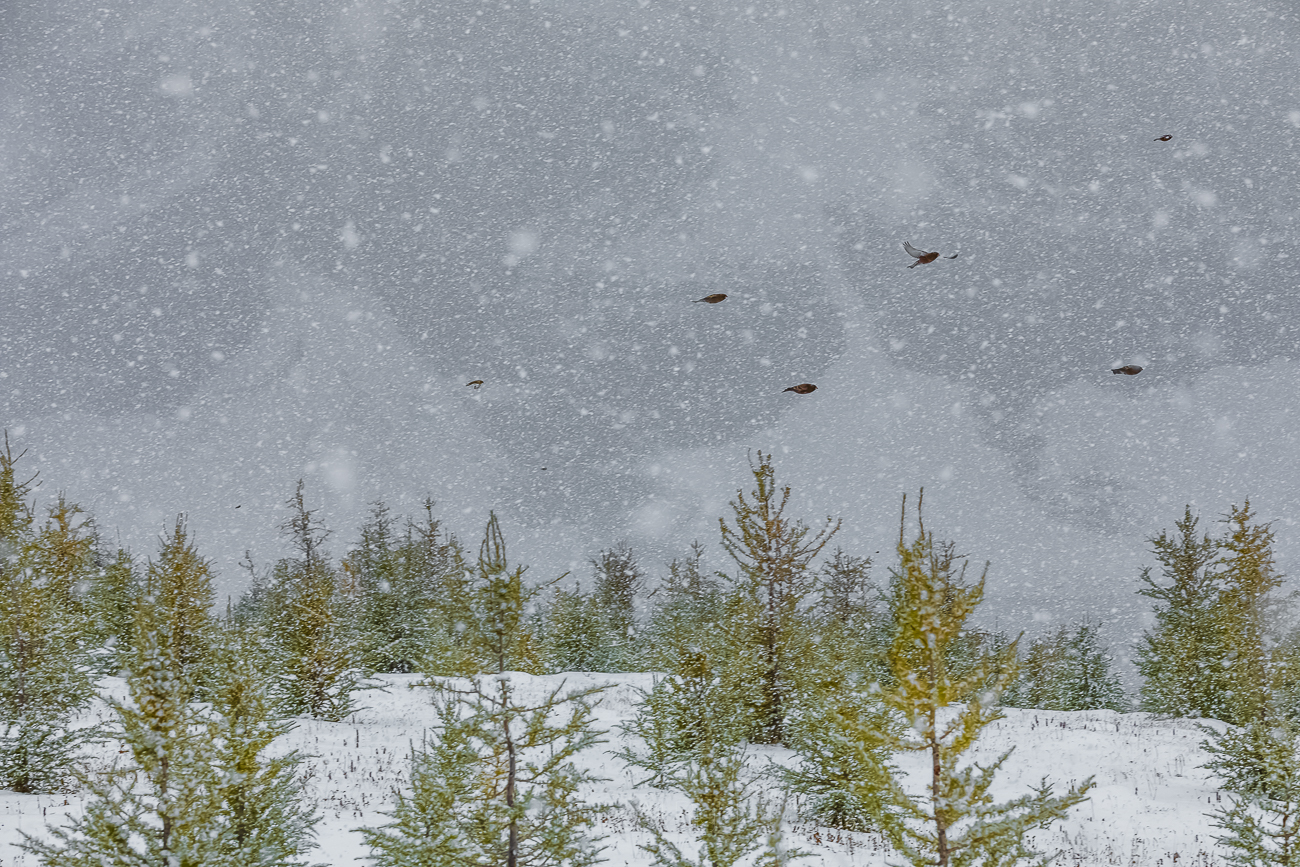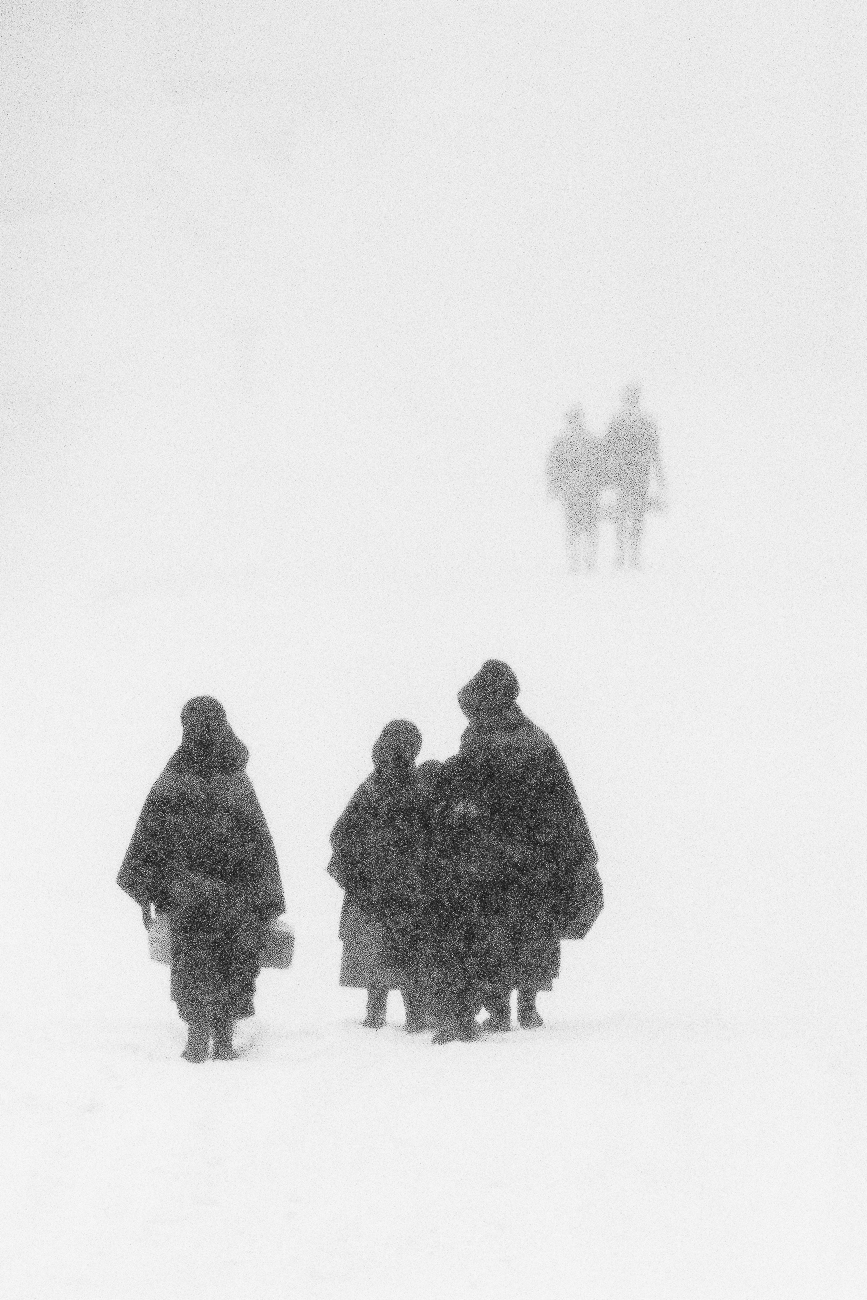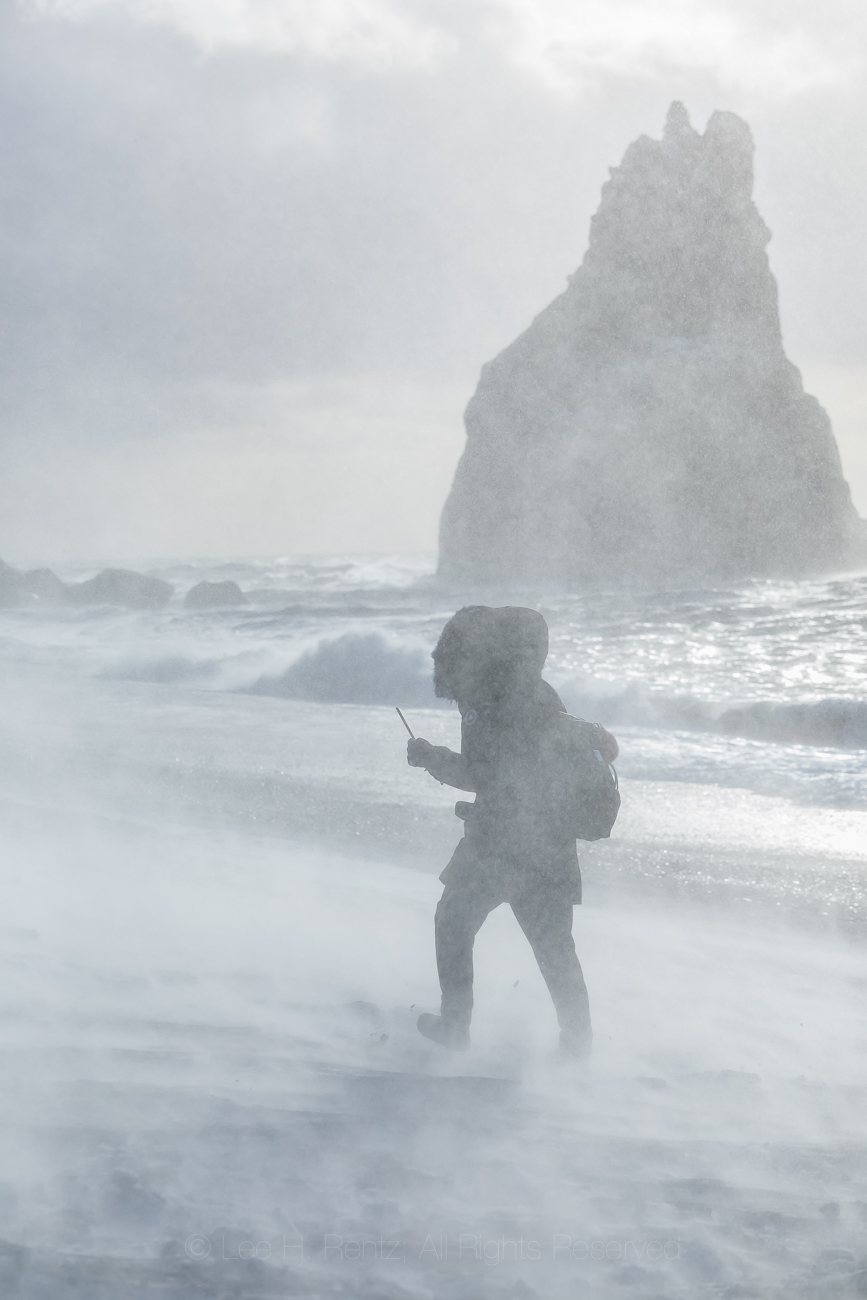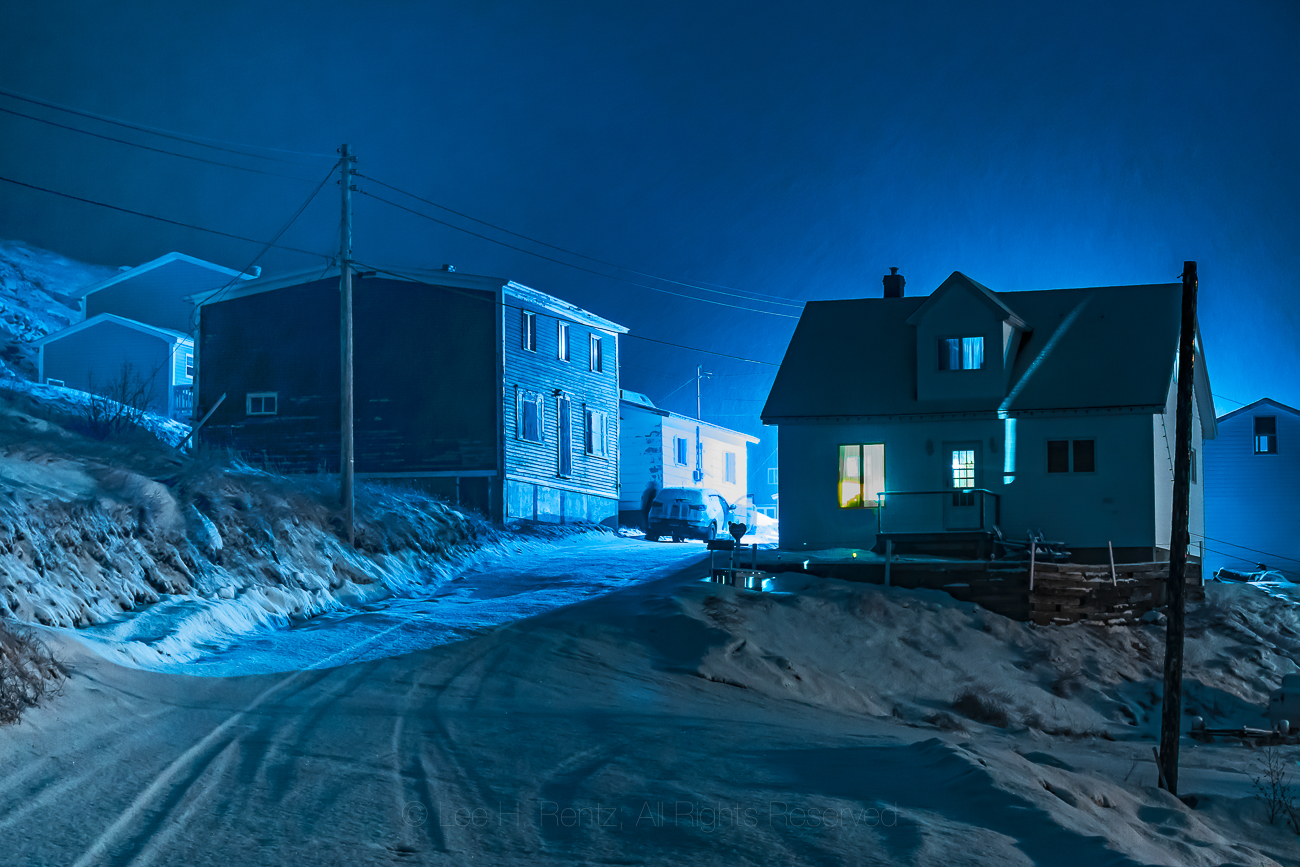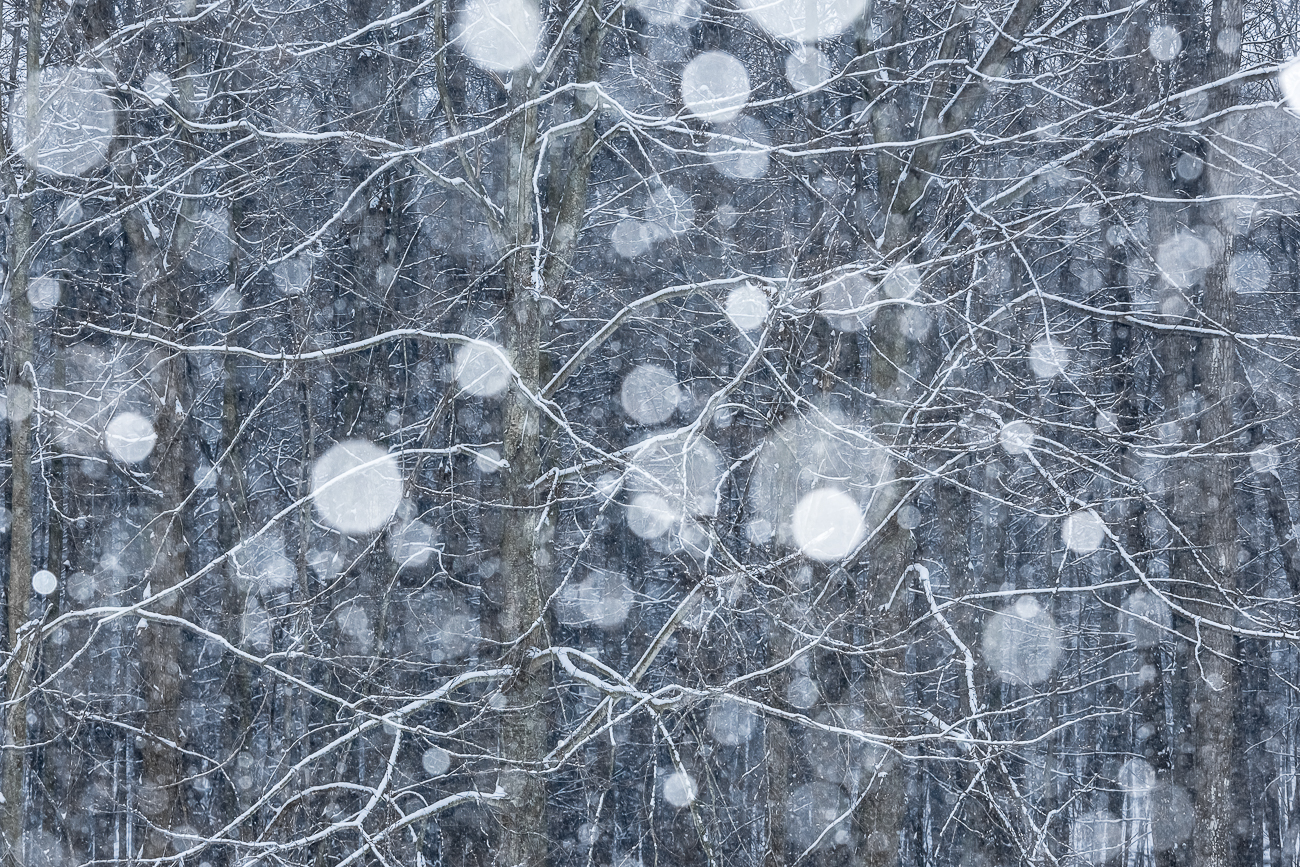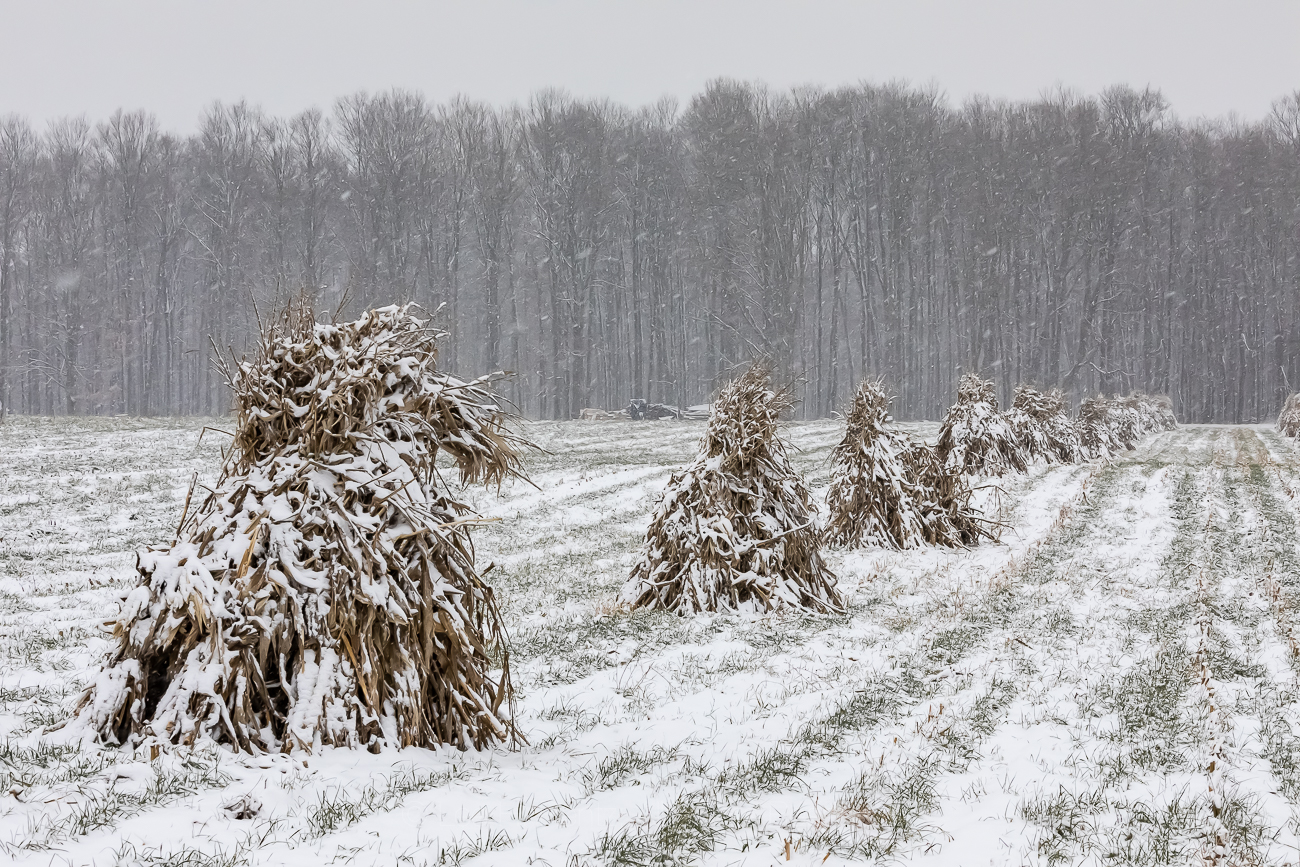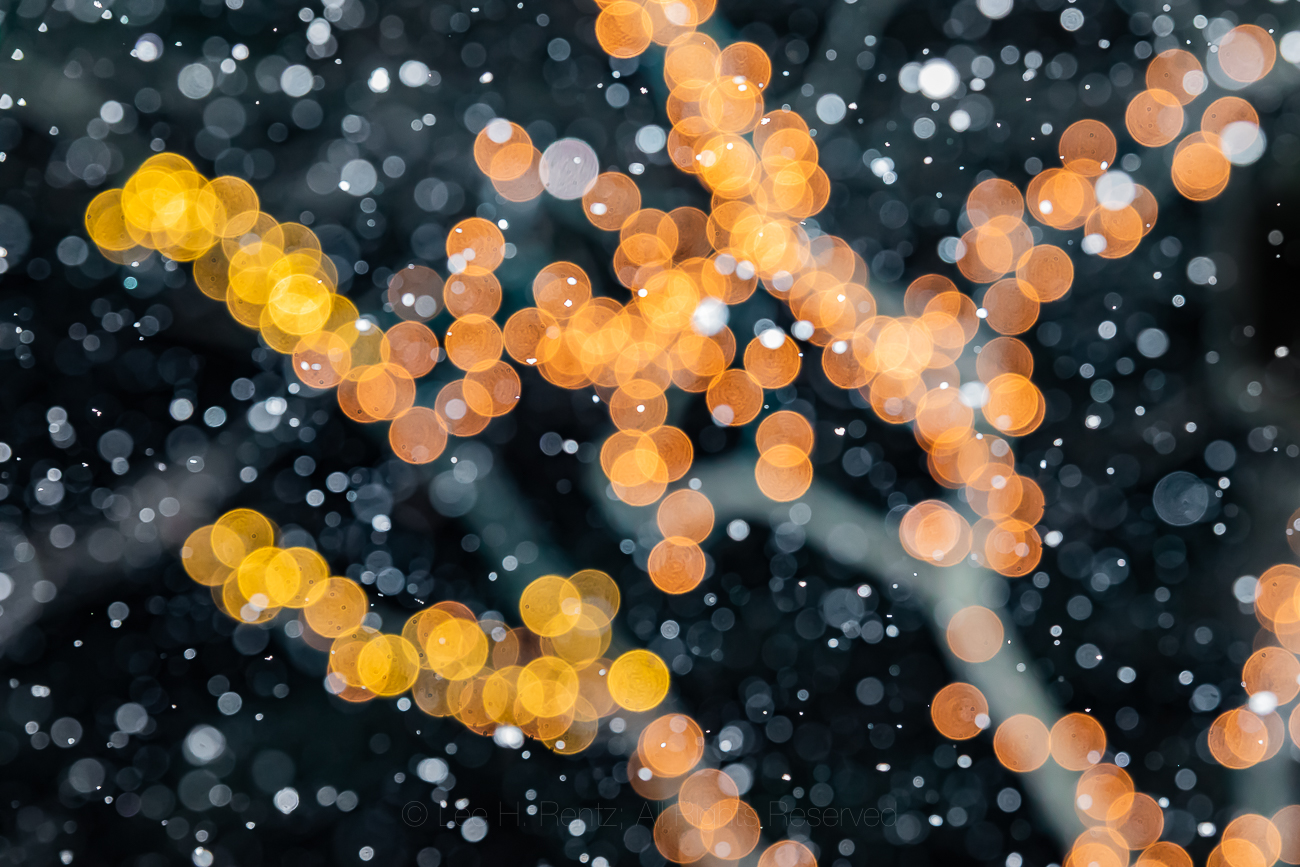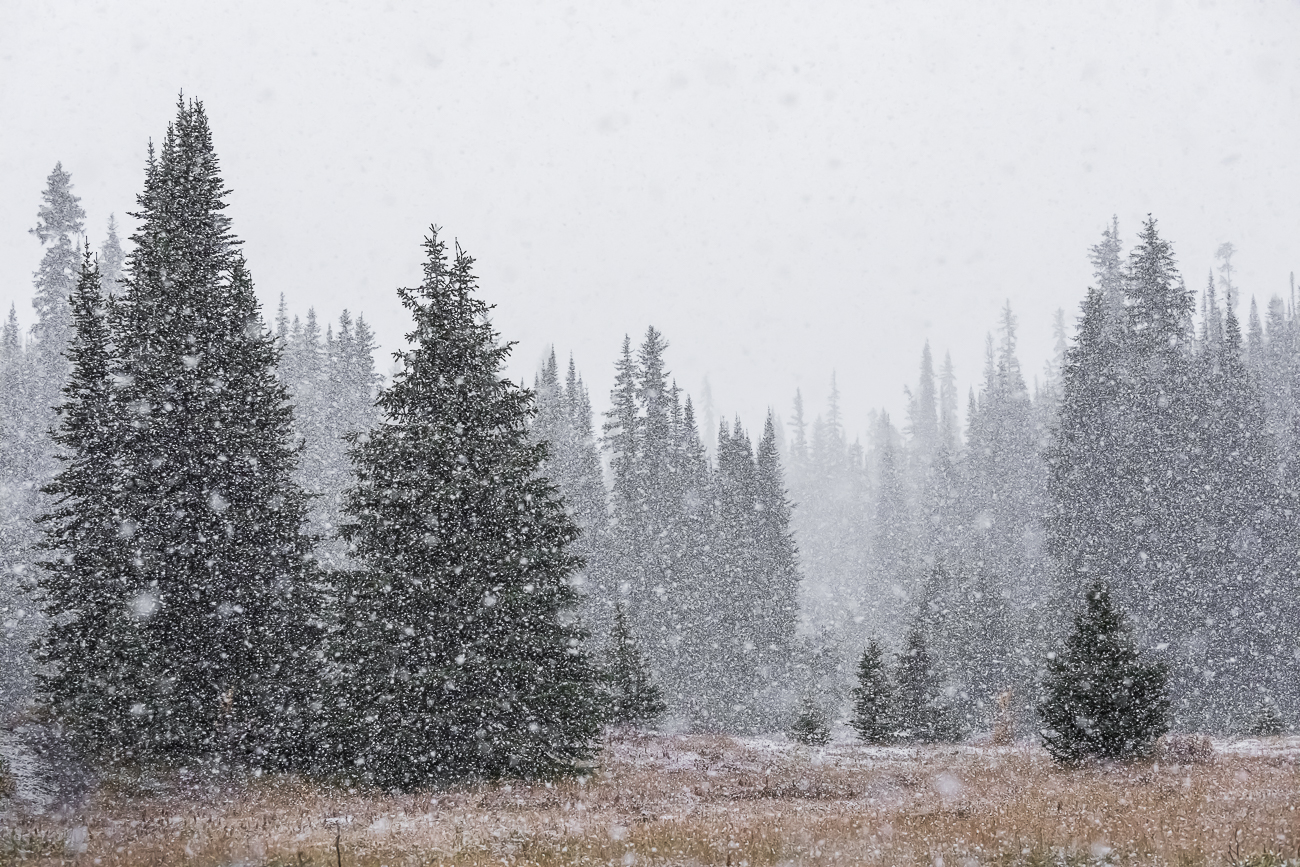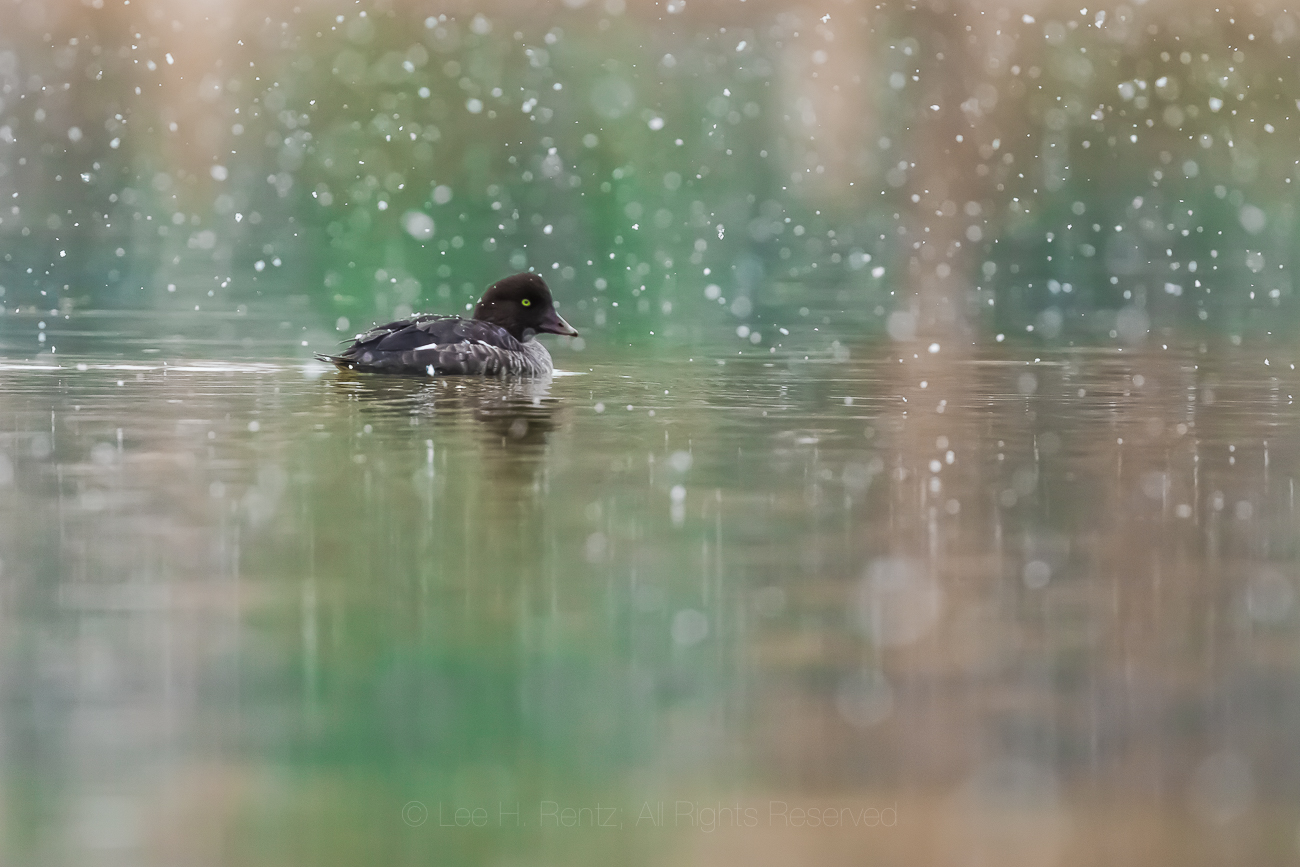

 Silk Frost, known more widely as Hair Ice, emerging like fine hair from alder branches; the tiny water droplets show the ice beginning to melt as the temperature rises (an alternate theory is that it is condensation from the photographer’s breathing on this cold morning)
Silk Frost, known more widely as Hair Ice, emerging like fine hair from alder branches; the tiny water droplets show the ice beginning to melt as the temperature rises (an alternate theory is that it is condensation from the photographer’s breathing on this cold morning)
Overnight our Olympic Peninsula skies cleared and the temperature plunged to 28°F. That isn’t very cold by midwestern standards, where this winter is bringing temperatures and wind chills far south of -20°F, but it was cold enough to create something extraordinary and beautiful that I have never seen before.
I walked down the hill to our house, and saw a bright white patch about the size of a discarded Kleenex, which is what I thought it was and I wondered who had been despoiling our yard. I went over to retrieve it, and discovered that it was actually a patch of ice that seemingly sprouted from the ground and looked to be made up of fine hairs of ice. I was curious what it was, and I looked around to see if there were any others. There was a bigger blob of the stuff at the end of an old branch, and then I saw a couple more.
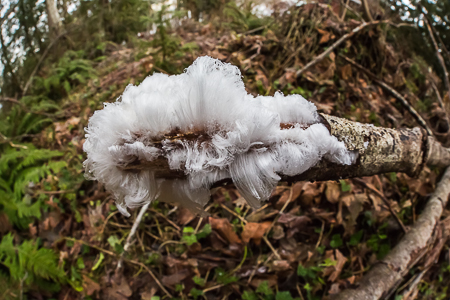
 Each of the above formations was growing from alder wood
Each of the above formations was growing from alder wood
This was a cold morning, so there was frost on the Sword Ferns and grasses around our house, but frost has an entirely different look from this hairy ice. I showed Karen, and we agreed that all these patches of hairy ice were sprouting from old branches that were either on the ground or sticking up in the air. It was distinctly different from the frost flowers we’ve seen emerging from the frozen ground around here, which are thicker and look like they are extruded.
I photographed the formations, then used the internet to try and discover more about them. It turns out that these formations are quite rare, and have mostly been observed on the Olympic Peninsula and nearby Vancouver Island, and in parts of Europe. The consensus name is Hair Ice, though the names Frost Beard, Ice Wool, Feather Frost, Silk Frost (my favorite), and Cotton Candy Frost have also been used.


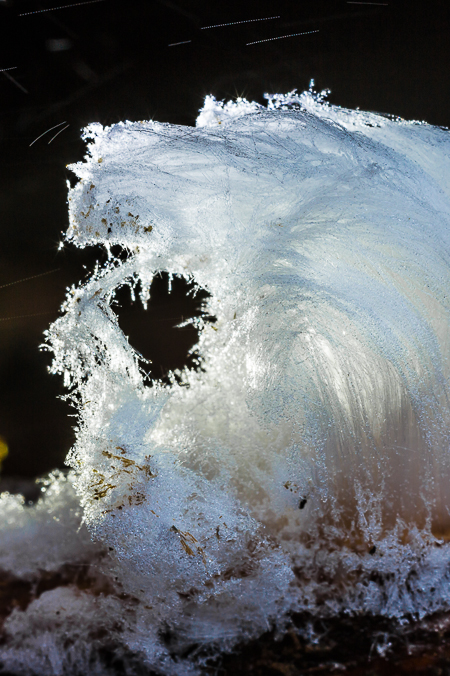

I don’t keep my yard very neat, especially in the wild patches beyond the mowed lawn and planted rhododendrons. If an alder branch falls in the forest, I’m not likely to hear it and will usually just let it be; as a naturalist, I prefer the chaos of the natural forest to the tidy landscaping around most homes. And that chaos of fallen branches is key to growing Hair Ice.
All of the Hair Ice around here was sprouting from old and decaying branches of Red Alder, a brittle tree that sheds body parts whenever we get snow or freezing rain. But where could the water be coming from that forms these hairs, which look to be as fine as human hair? This has actually been a mystery for a long time, though a German scientist described a possible association between fungus and Hair Ice in 1918. That scientist, Professor Alfred Wegener, became better known for his imaginative and long-controversial theory of Continental Drift, which has become a keystone theory to understanding the geological history of the Earth.
In 2008, two European scientists published a paper called “Hair Ice on Rotten Wood of Broadleaf Trees–a Biophysical Phenomenon.” In this paper they described their tested theory of how Hair Ice is formed. It turns out that fungus is indeed the key, and the Olympic Peninsula is renowned for its fungi. As we all know, fungus in fallen branches is responsible for recycling the nutrients in the wood, and this forest citizen takes its recycling responsibility very seriously. The fungus sets up a factory deep inside the branch, where it sets about decomposing carbohydrates and lipids–just as humans attempt to do with their New Year’s resolutions.
The fungus feasts on the nutrients, leaving water and carbon dioxide gas as waste products (hey, I would drink the carbonated water, but what do I know in comparison with a fungus?). And this is the key: the carbon dioxide forms pressure within the decaying twig that pushes the water outward through microscopic openings in the wood called rays. When the supercooled water meets the freezing temperatures outside, the water freezes into a tiny crystaline structure. Then, as the crystal is pushed by the water behind it, and the emerging water subsequently freezes, hair-like crystalline structures form that appear to be finer than the diameter of human hair. Together, the phenomenon looks a bit like white hairs emerging from an older person’s scalp–though I wish I could sprout that much hair from my bald head.




We had a stretch of three days of clear nights and freezing temperatures, My photography activities on the first morning had destroyed the fragile formations, and I wasn’t quite satisfied with the pictures, so I hoped to see the phenomenon repeated on the next morning. I awoke to 26°F temperatures, went outside, and saw new Hair Ice at each of the places it had been the day before. I spent a couple more hours photographing, until temperatures rose above freezing and the ice began to melt. The next day, temperatures went down to about 28° overnight, and I repeated the process; once again, the Hair Ice showed up in exactly the same spots. It was wondrous to see something entirely new to us.
Living here on a small patch of forest on the Olympic Peninsula has taught me so much. I’ve seen Flying Squirrels coming to our bird feeders and entering our birdhouses. We have Mountain Beavers living in burrows amongst our ferns; though we’ve never seen one, we see the neatly clipped fern fronds outside their burrows (these are a Pacific Northwest mammal not closely related to the regular Beaver). Last spring I photographed three kinds of salamanders that were living in rotten wood around our property (thanks again to my messy naturalist’s aesthetic). I’ve photographed Bald Eagles, River Otters, Douglas Squirrels, Black-tailed Deer, Western Screech-Owls, and numerous other species here. The gifts of wild land continue to be a source of inspiration in our lives.
The Bigleaf Maple and Red Alder and Douglas Fir and Western Red Cedar forest here has taught me a lot, and I like to keep it as wild as possible as a thank you to all the creatures who call this place home. The Silk Ice reminded me once again of how nature continues to amaze and delight.



For more information about Hair Ice, here are two sources, though for the latter you will need to know German, though an Abstract is in English:
http://my.ilstu.edu/~jrcarter/ice/diurnal/wood/
http://www.iap.unibe.ch/publications/download/3152/de/
UPDATE: About a month later, there have been three more times when Silk Ice has appeared on the same branches in my yard as before; in each case, the overnight temperature dipped to the mid to upper 20s. On two of the days, the formations were well-developed and I took new photographs, but on the other day, there was wind and I think that most of the ice had sublimated away, leaving only one patch hugging the ground, where the wind couldn’t get to it.
On another day, the conditions would seem to have been perfect, with no wind and temperatures below freezing, yet no ice developed. The problem was, the temperature had dipped to 19°F, which was apparently too low for the fungal decomposition to proceed, so water and carbon dioxide could not be produced.
To see my web site, which includes photographic prints for sale, please go to LeeRentz.com (just ask to email you a small version of a particular photograph you like if you can’t find it on the site; my website is not up to date).
To see thousands of my photographs in large file sizes for use in magazines or other printed materials or electronic media, go to my NEW website at Lee Rentz Photography or go to my Flickr Photostream.
